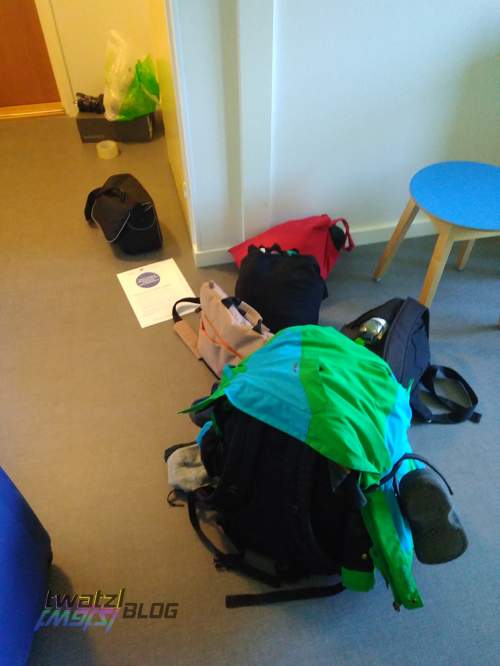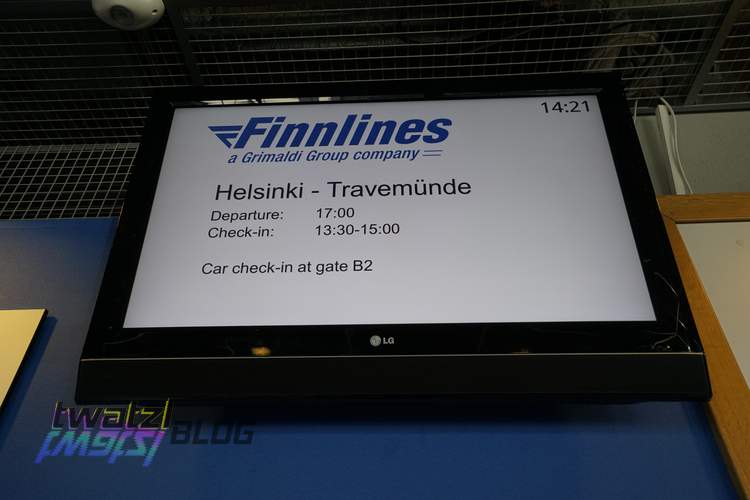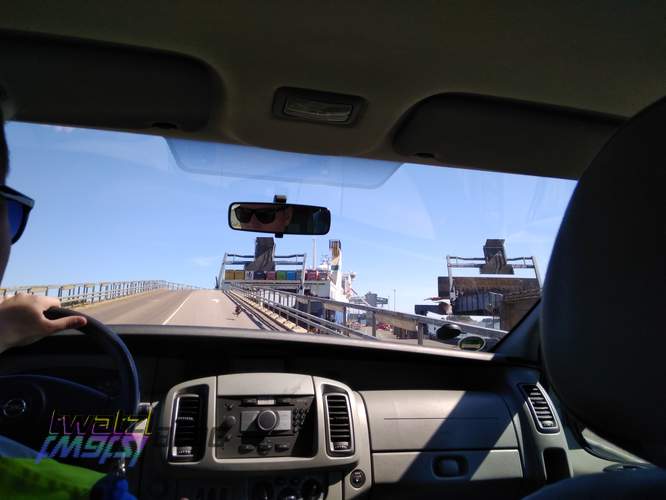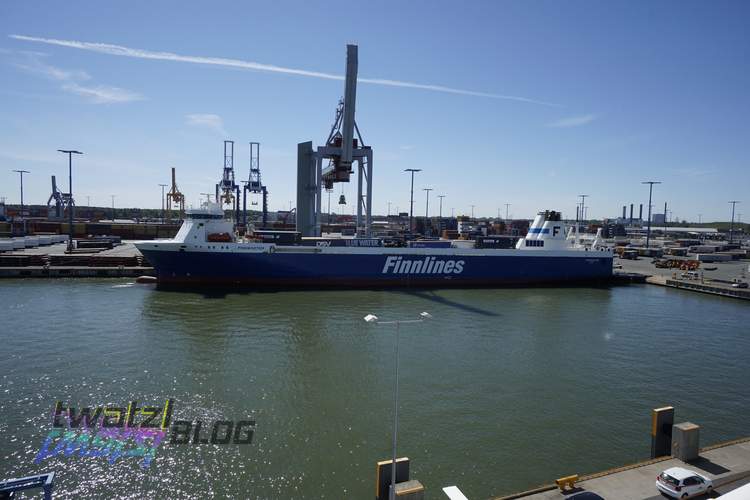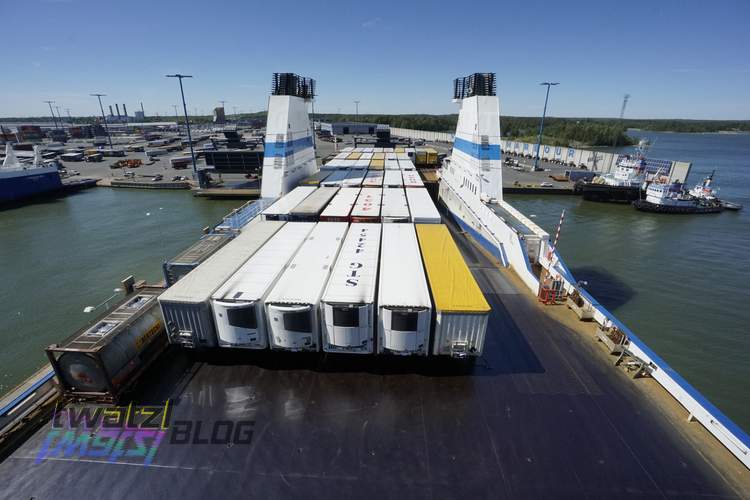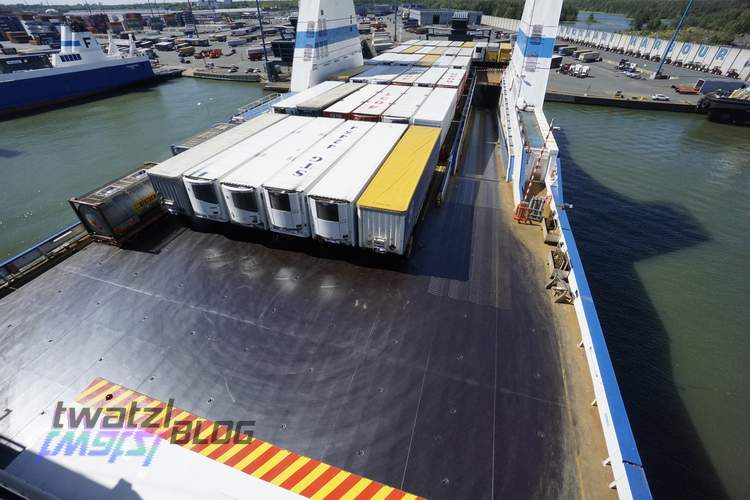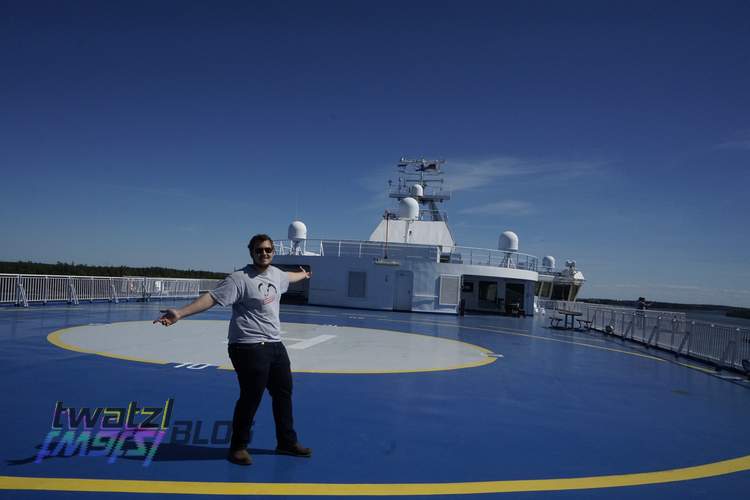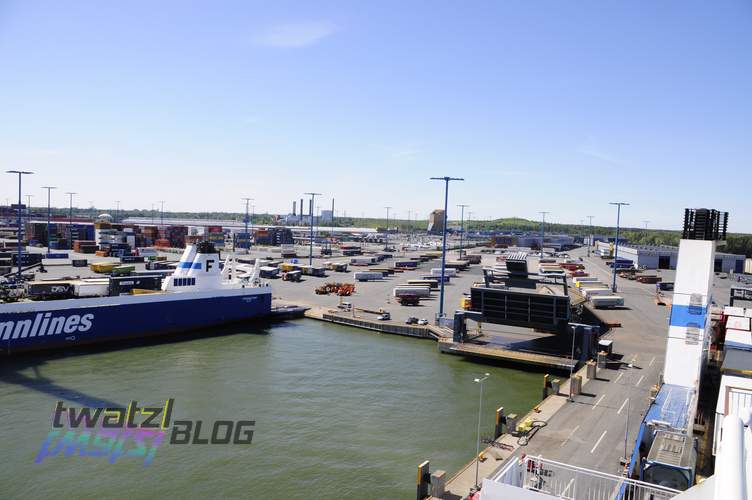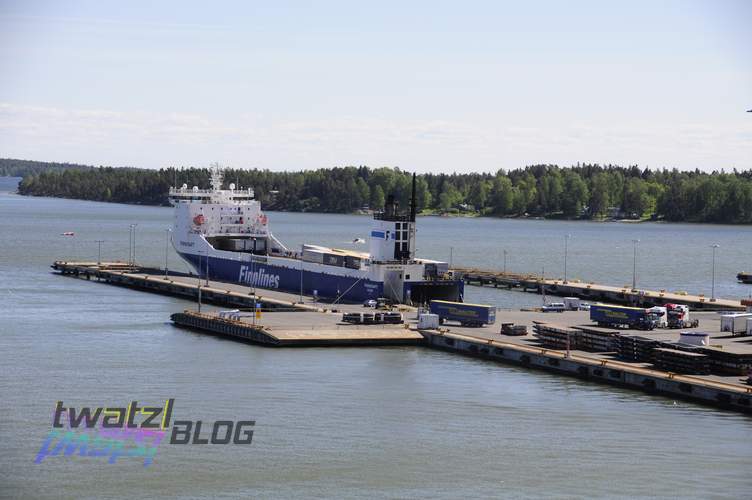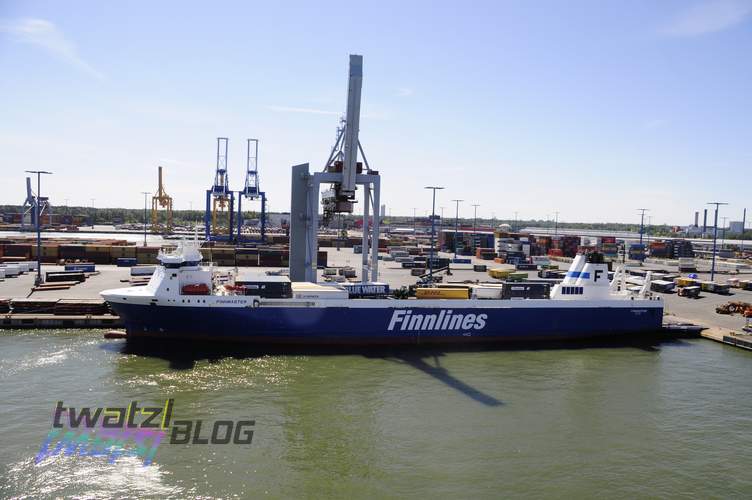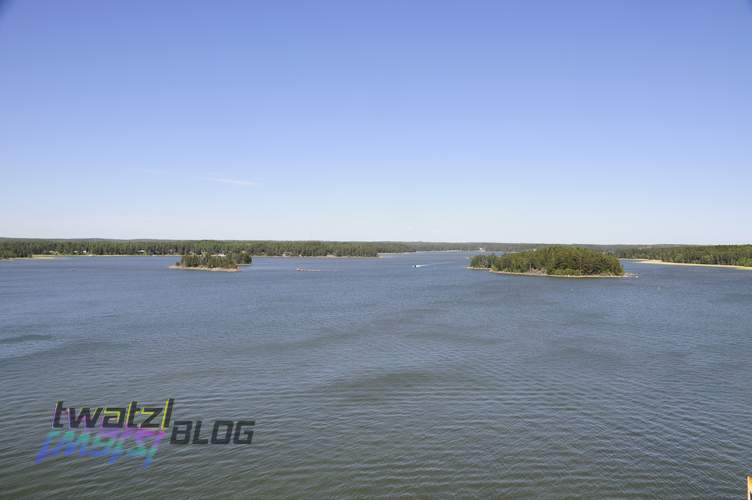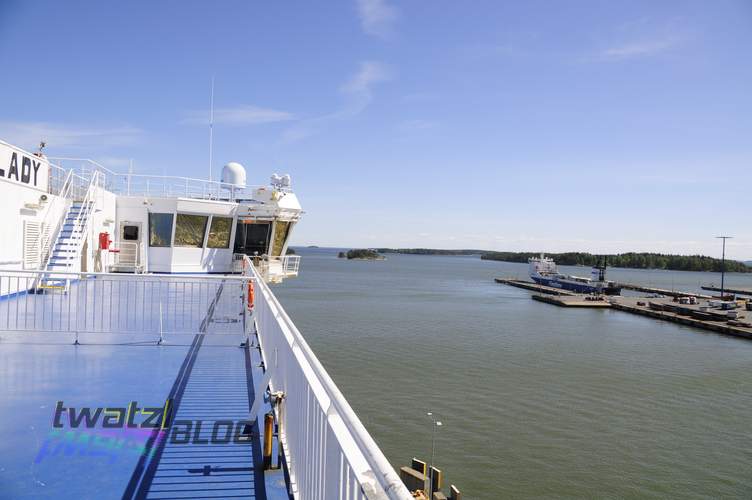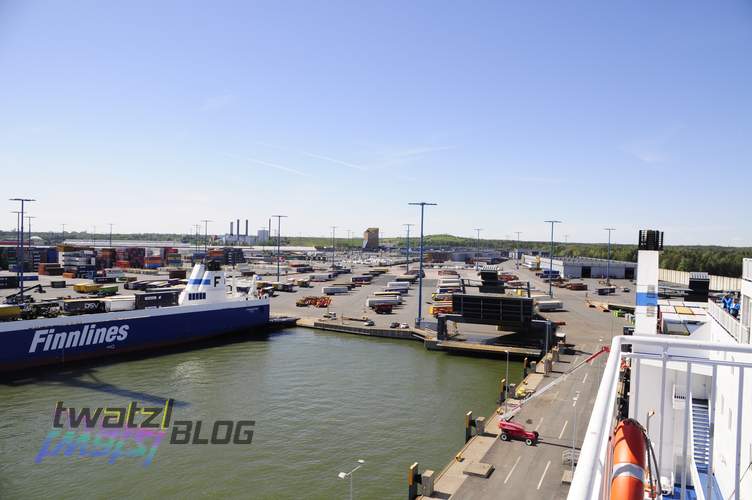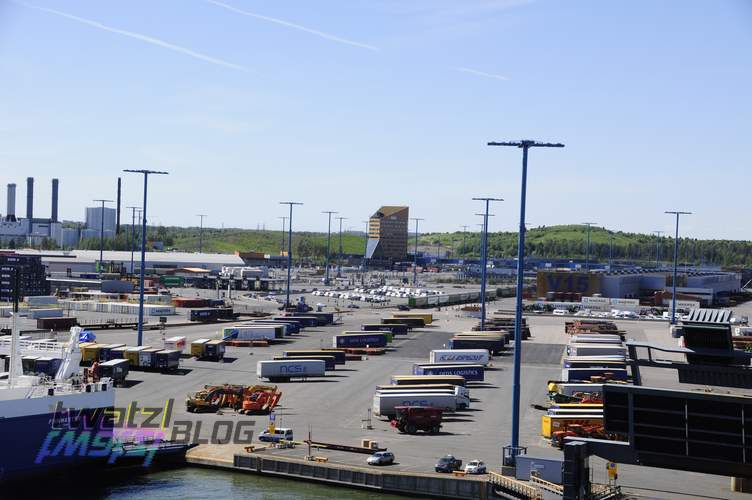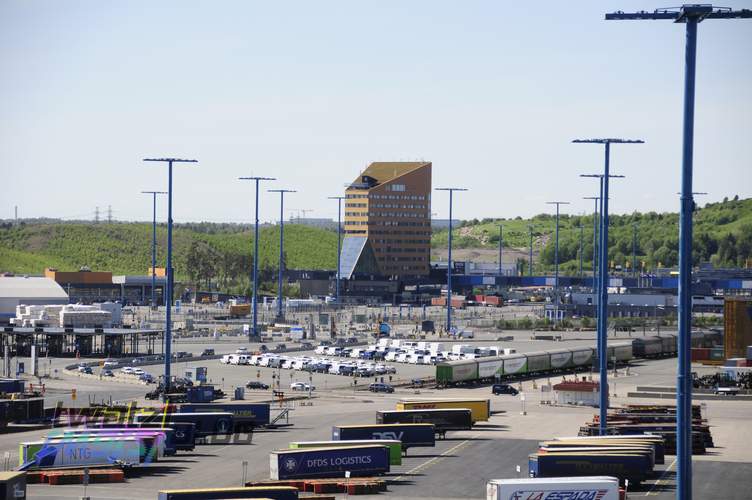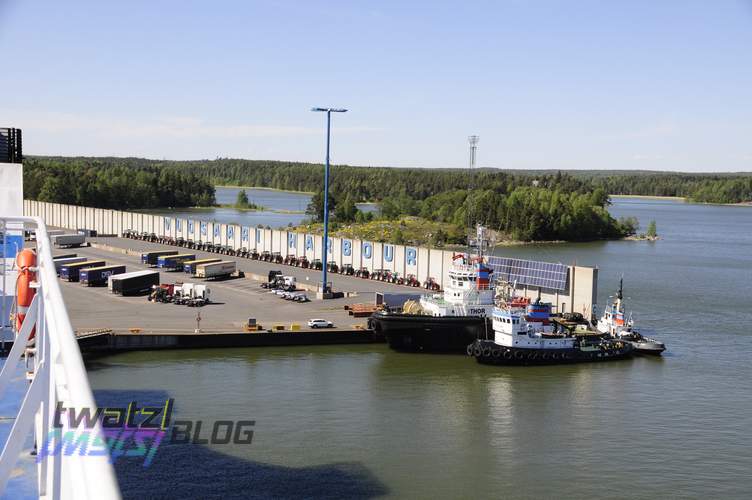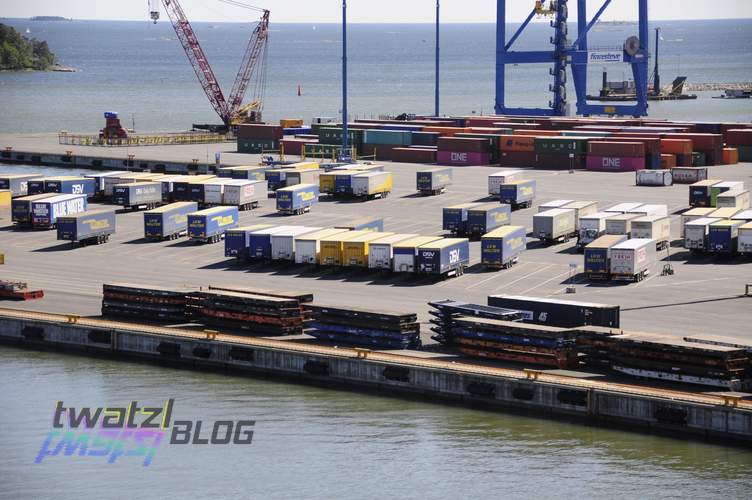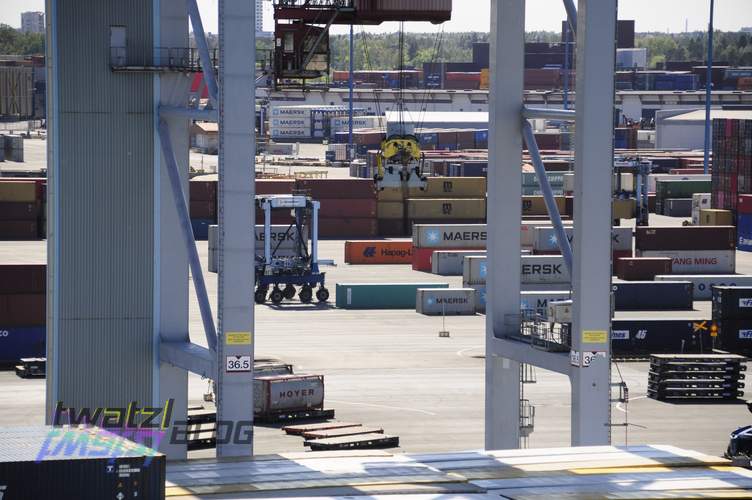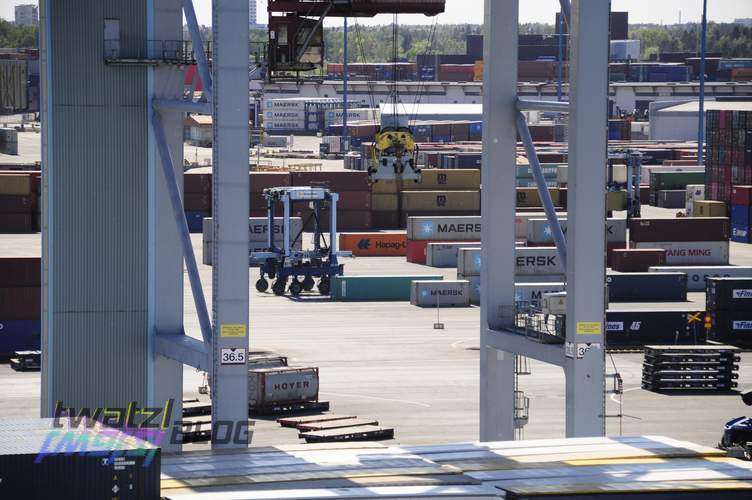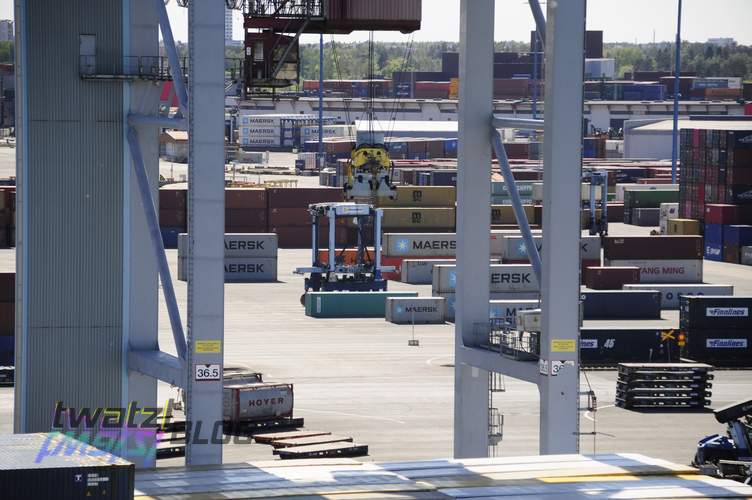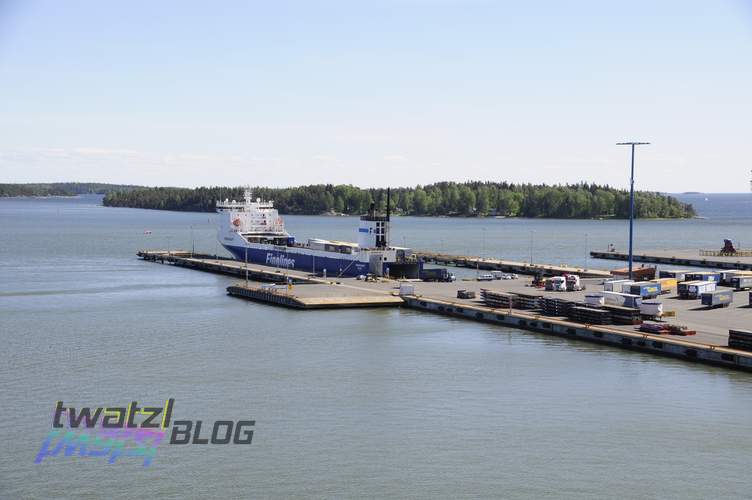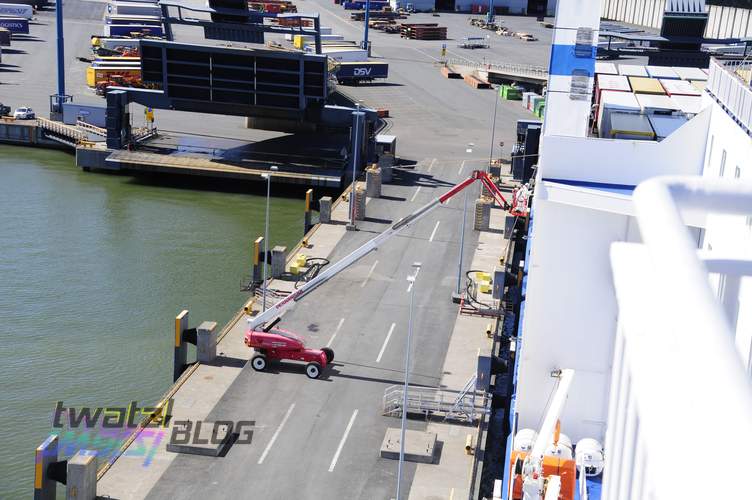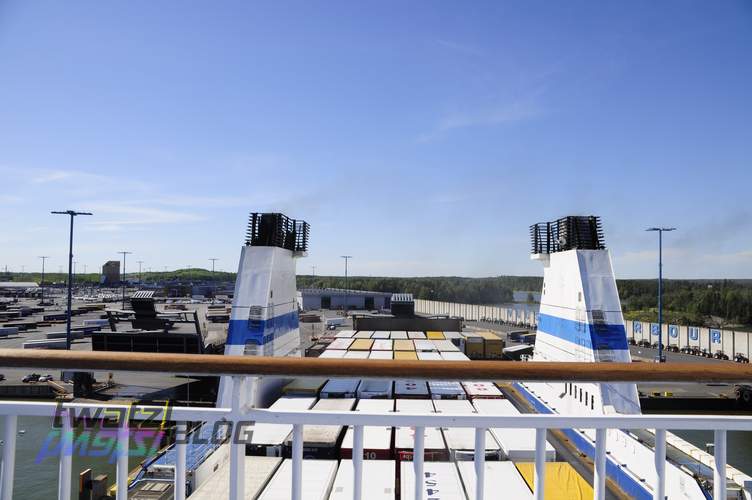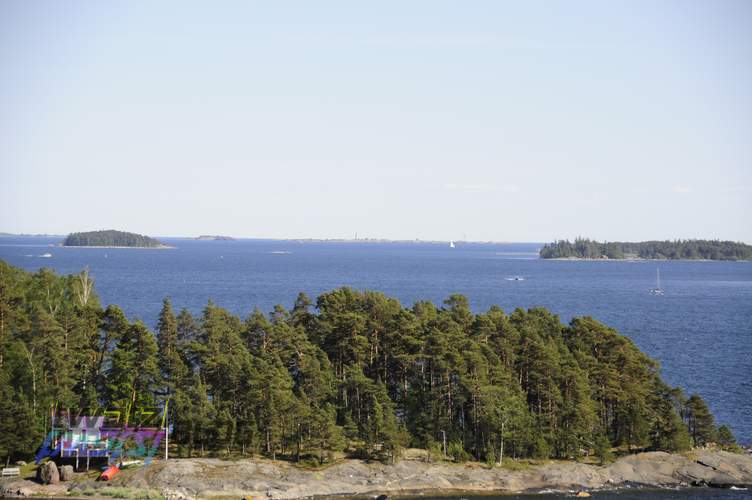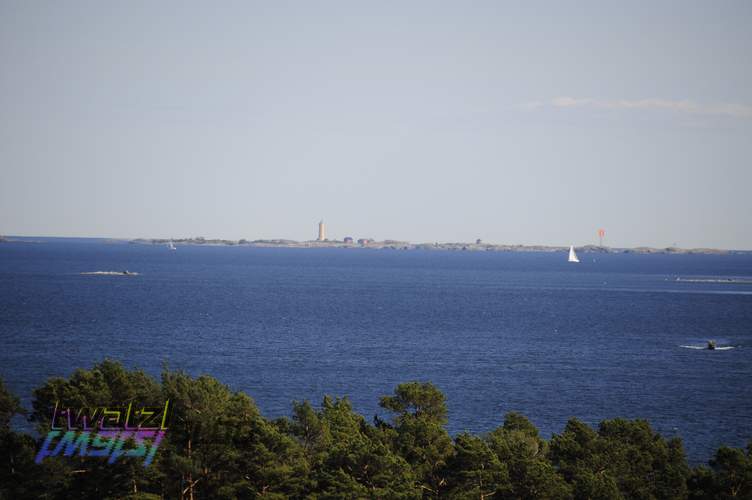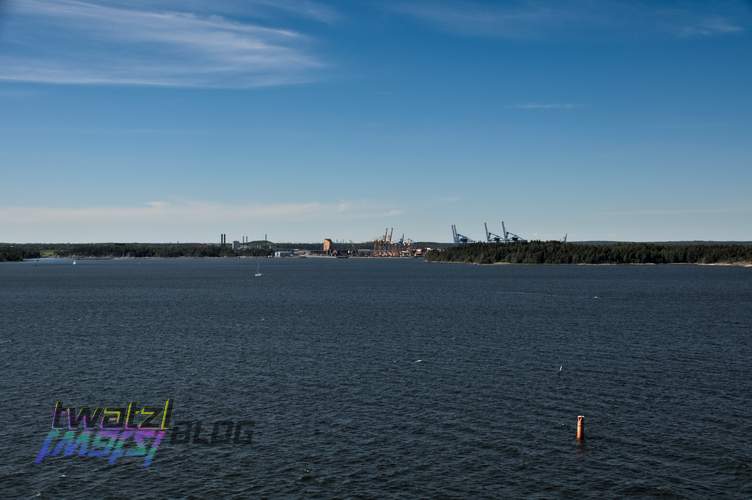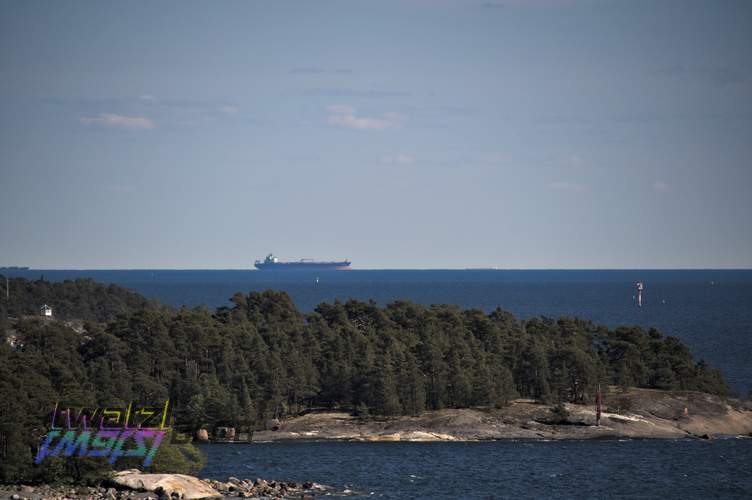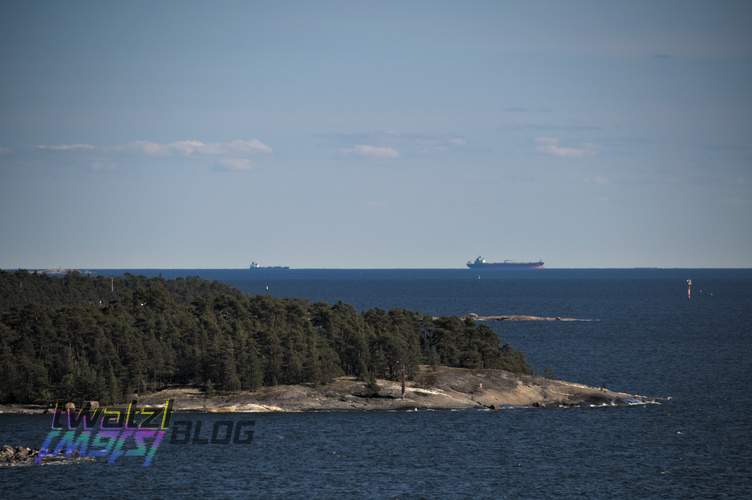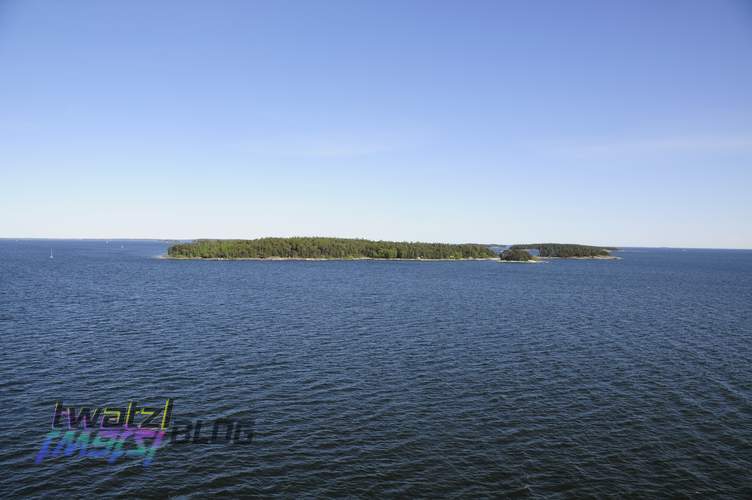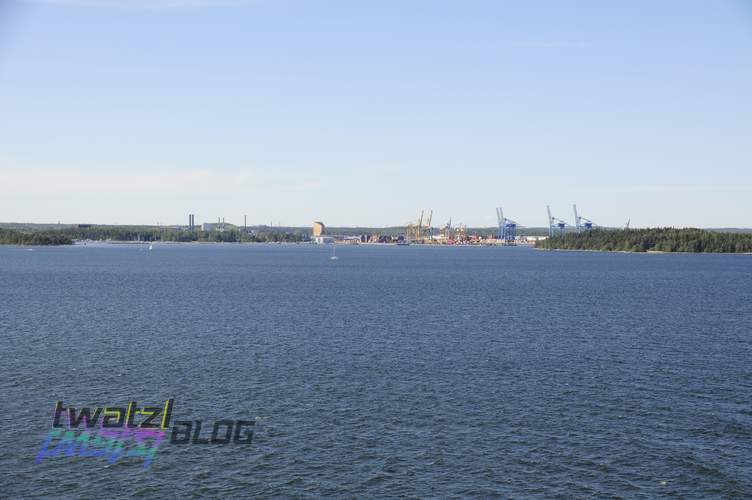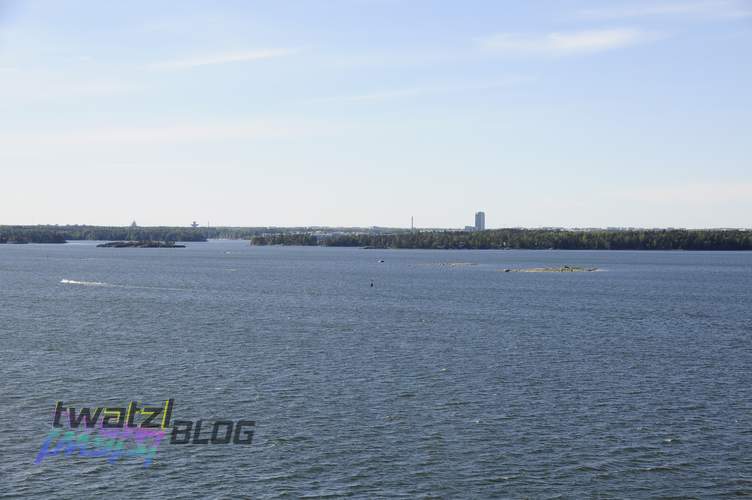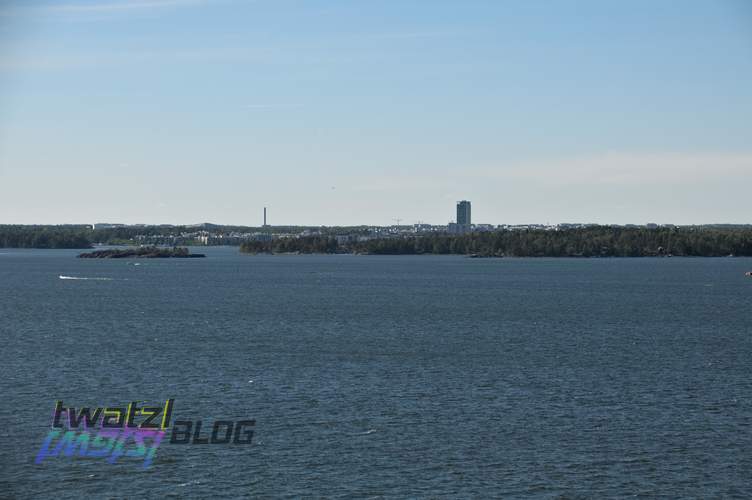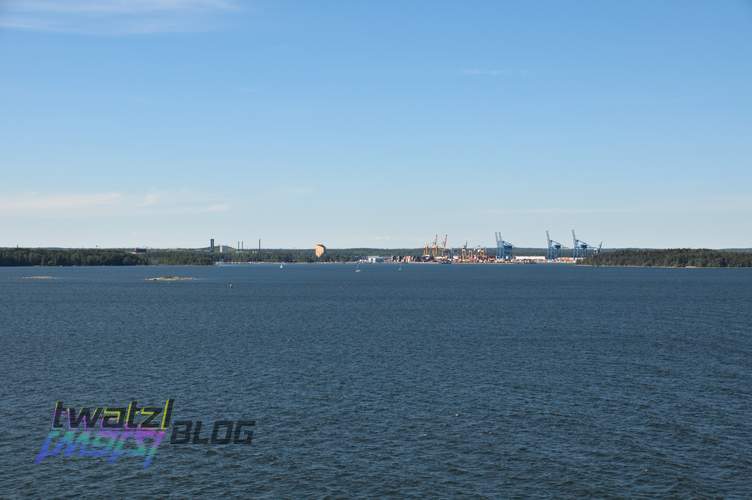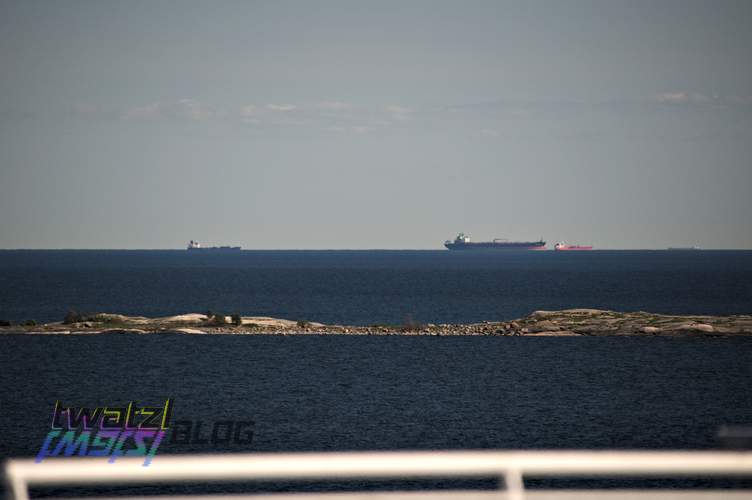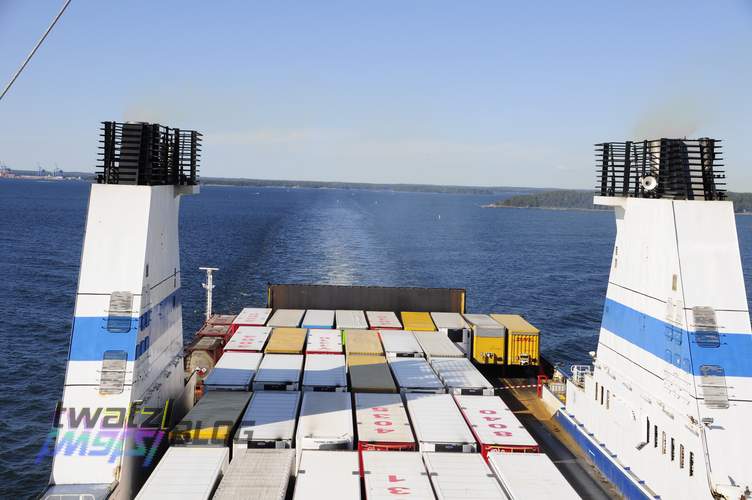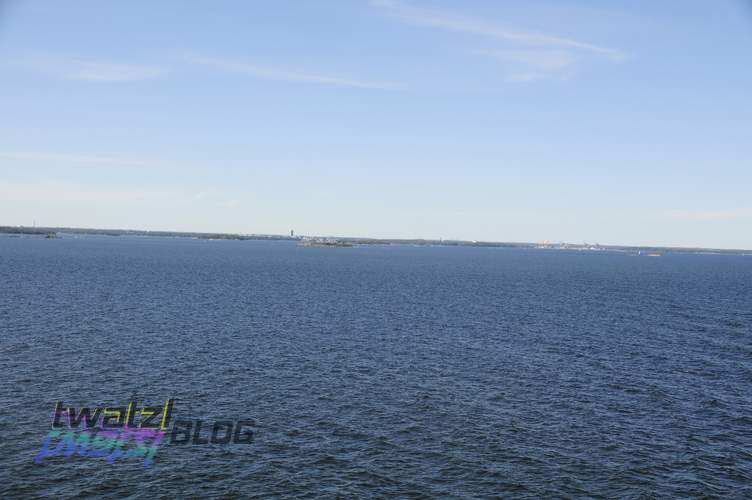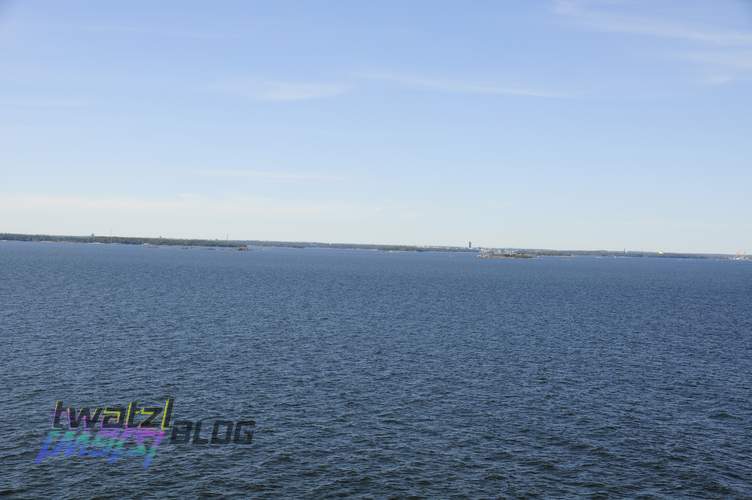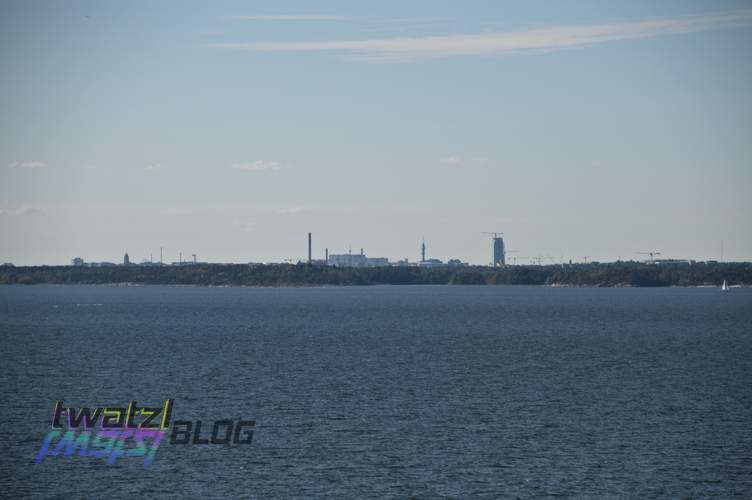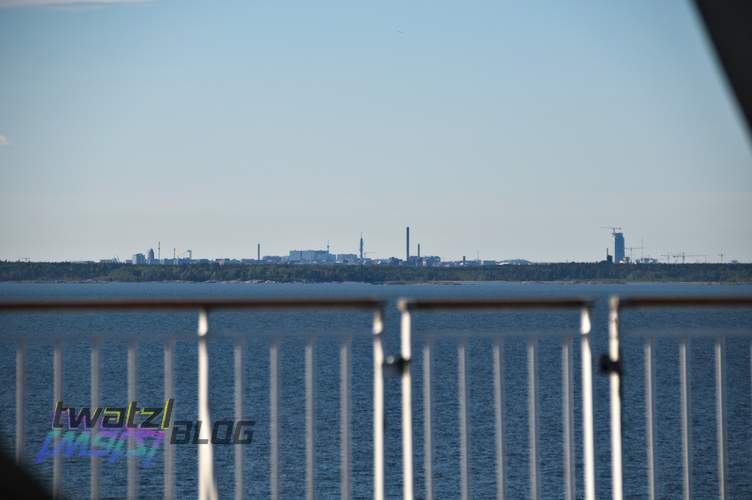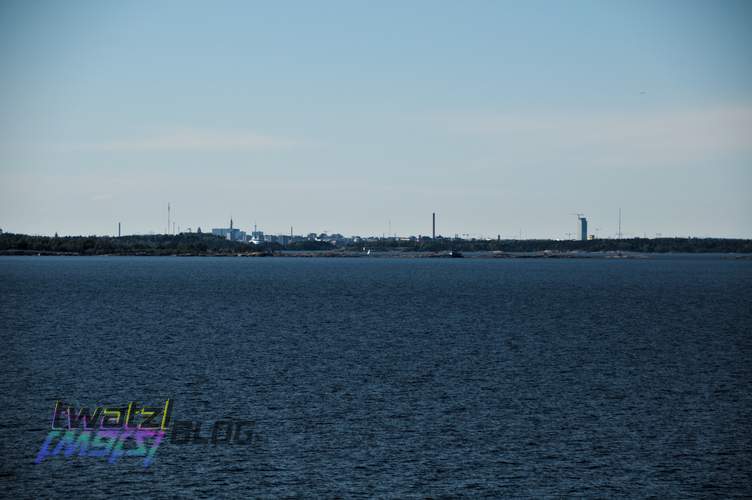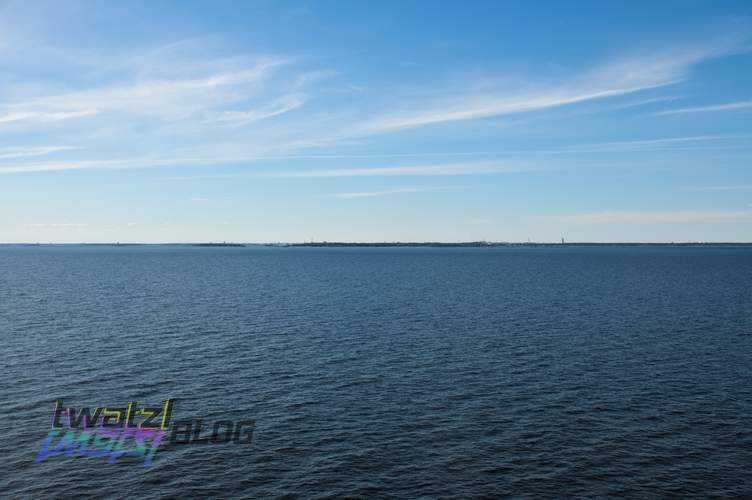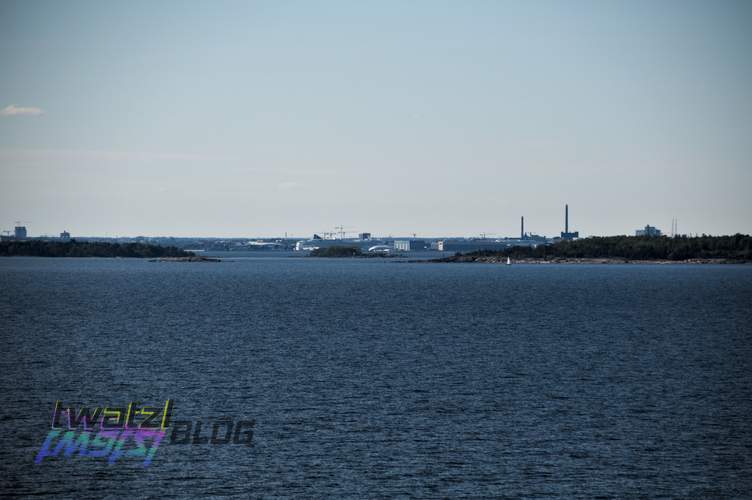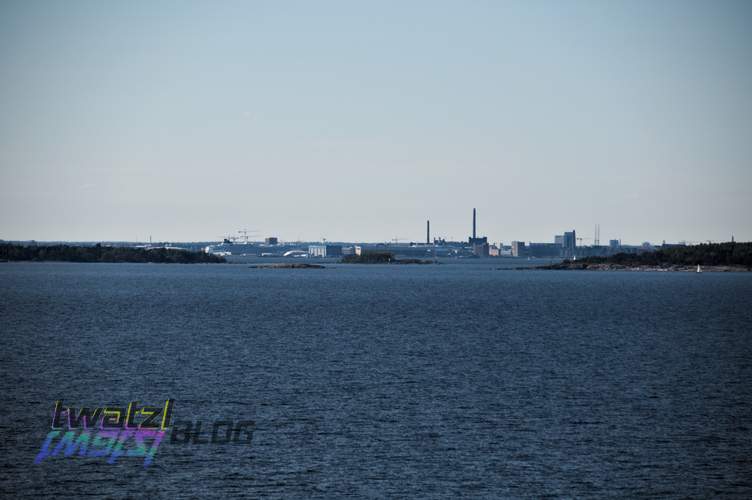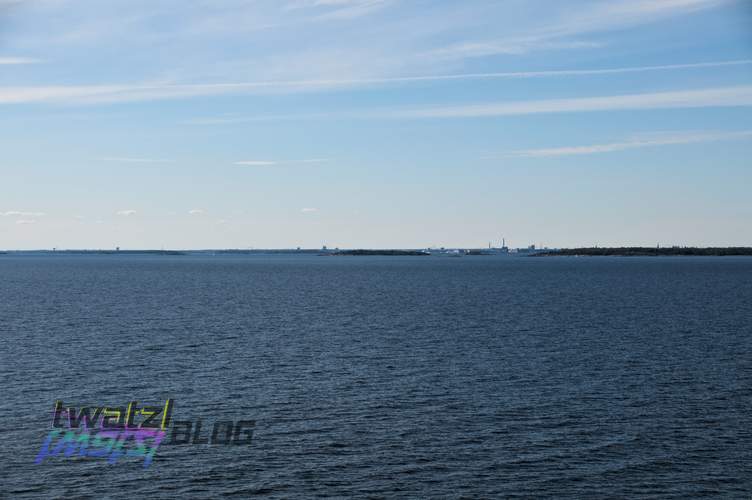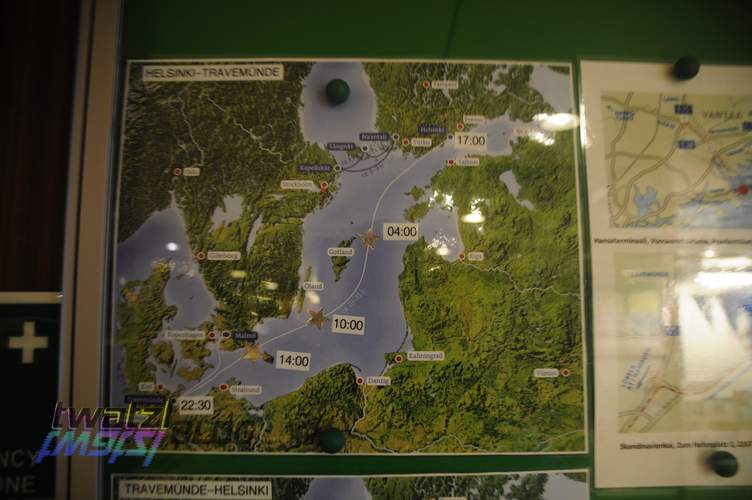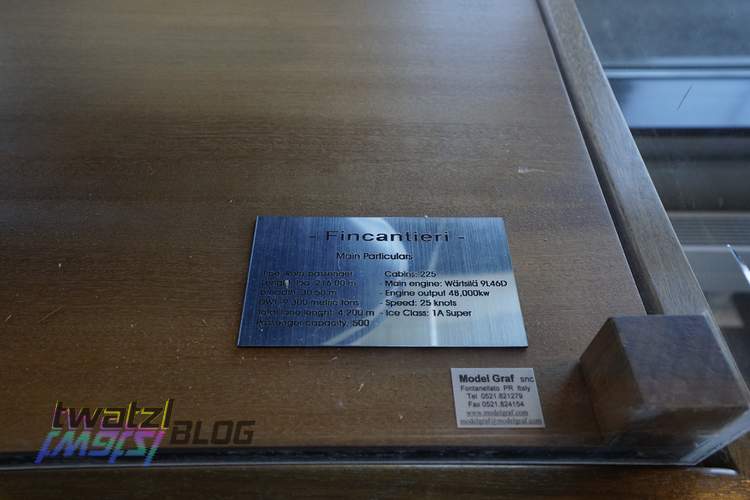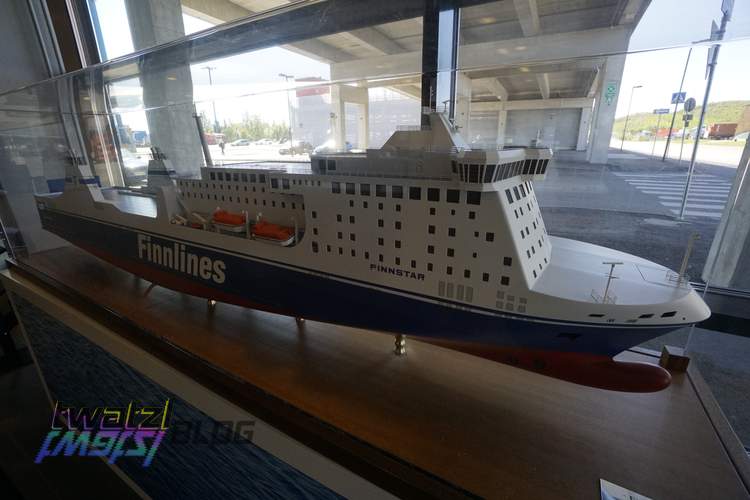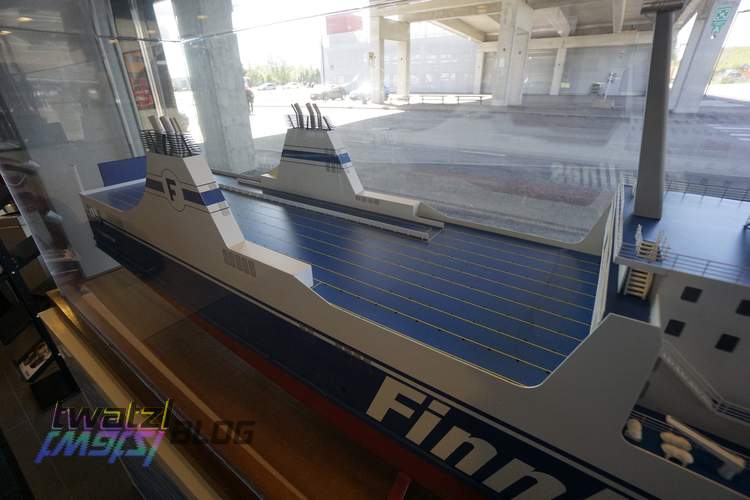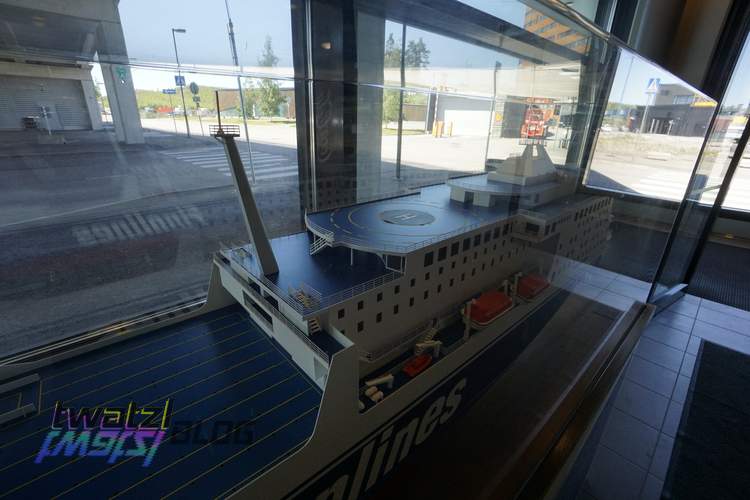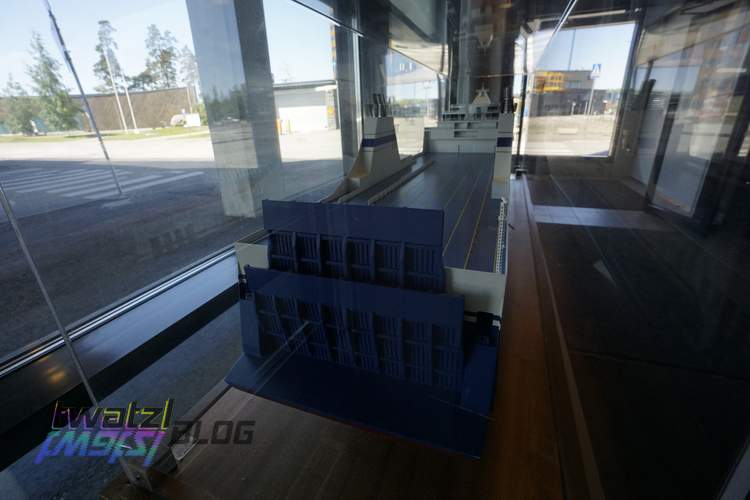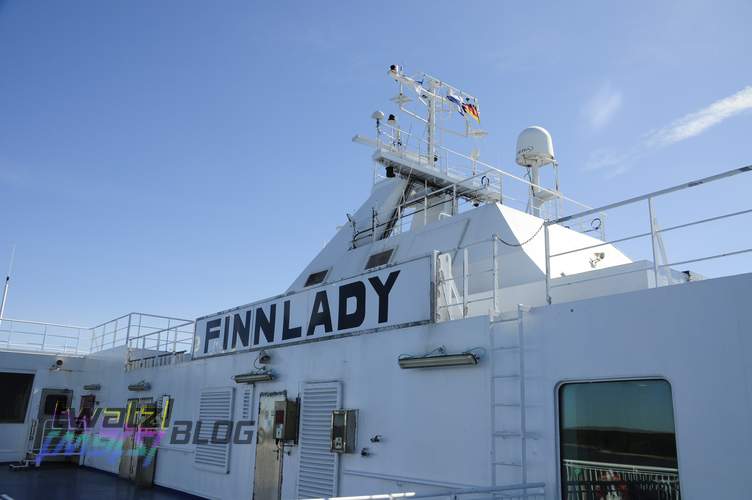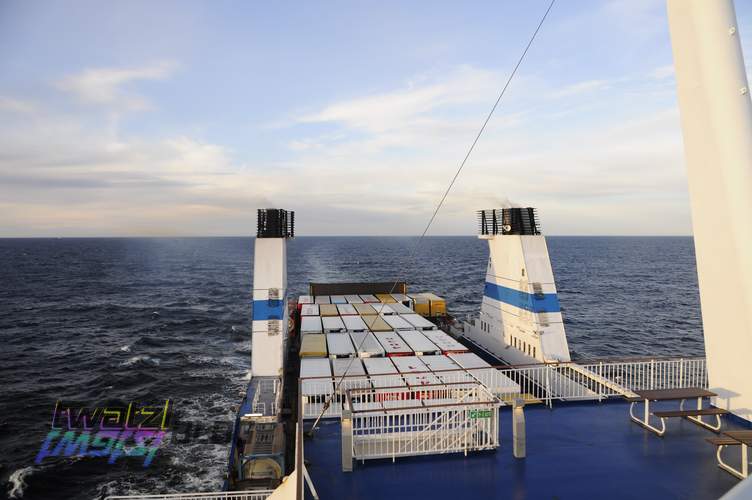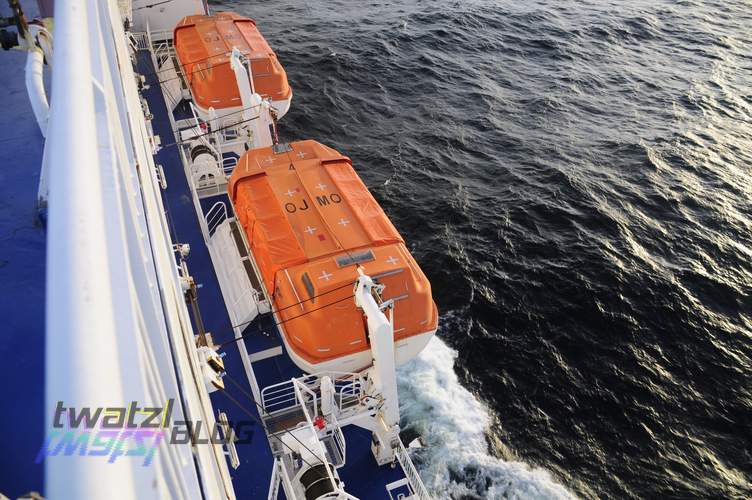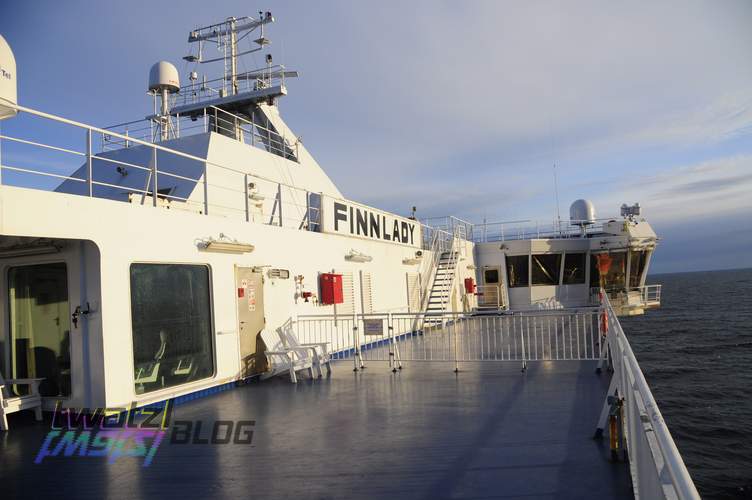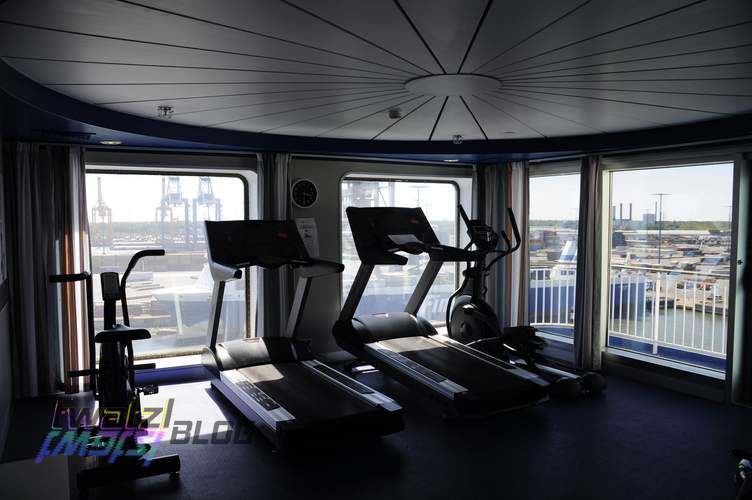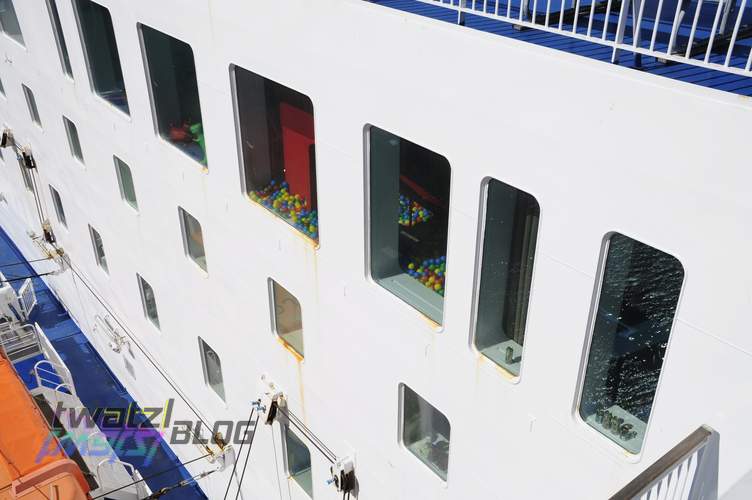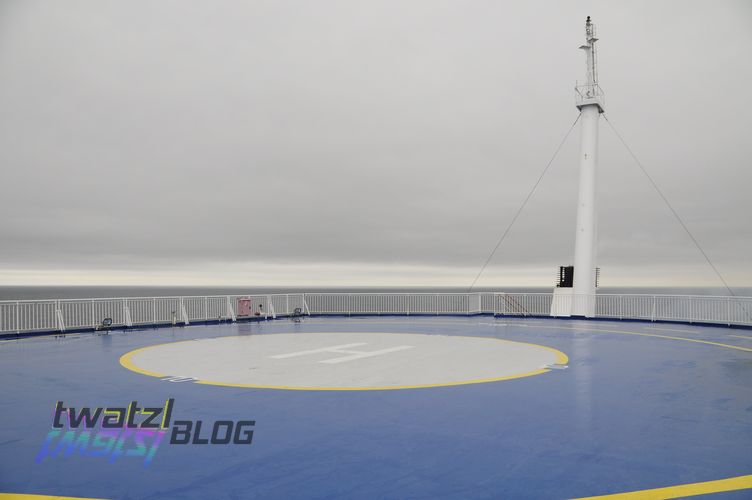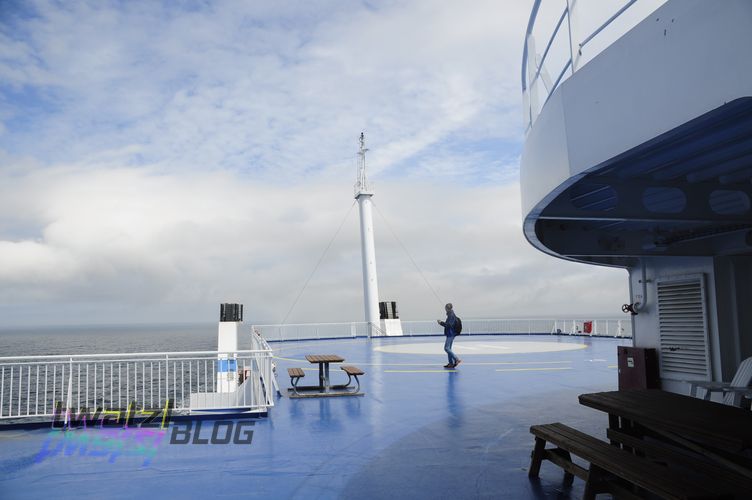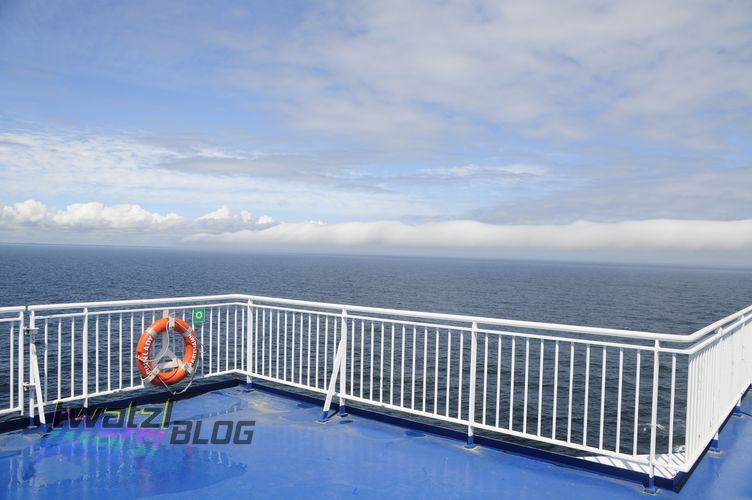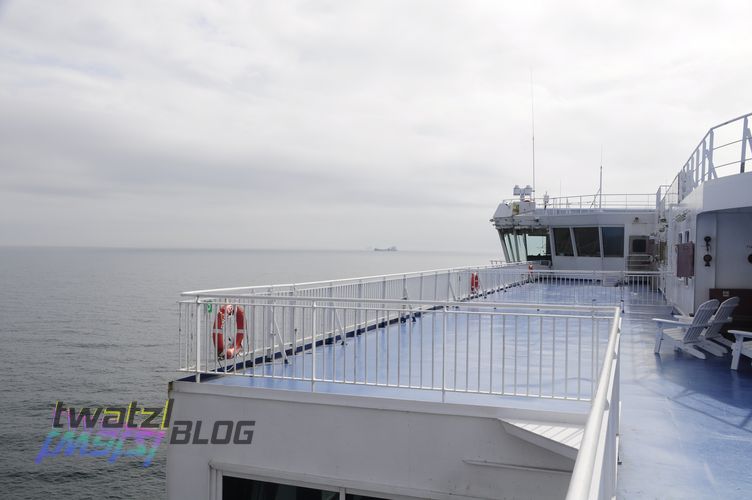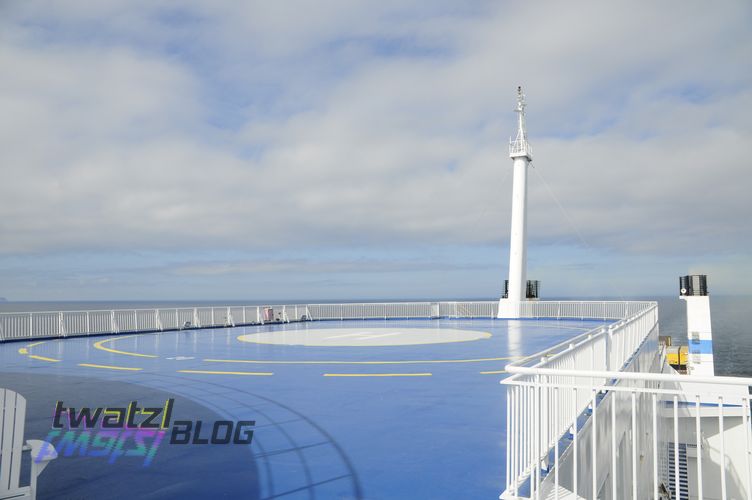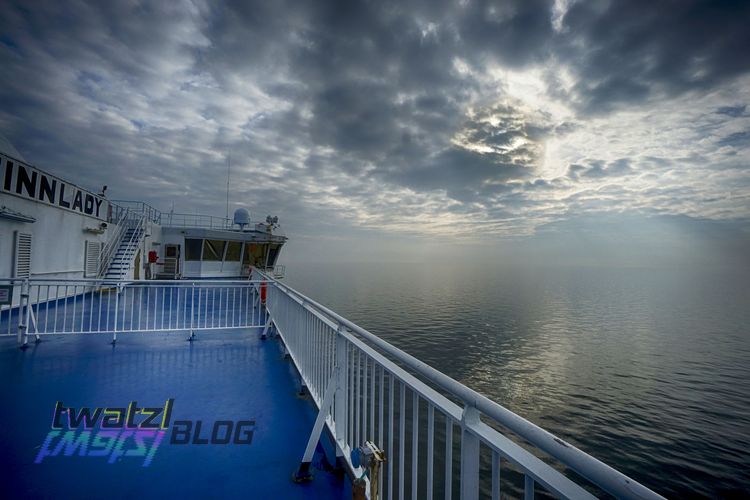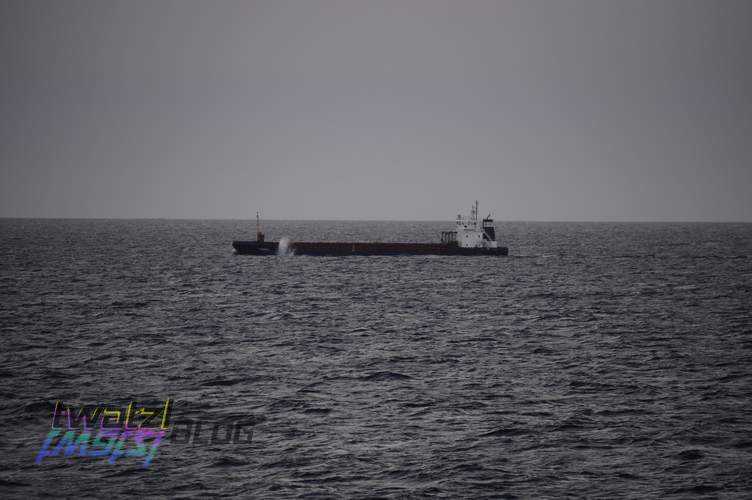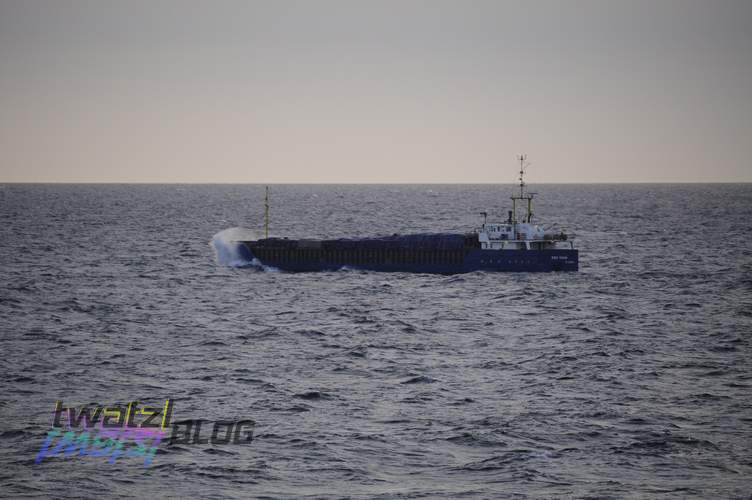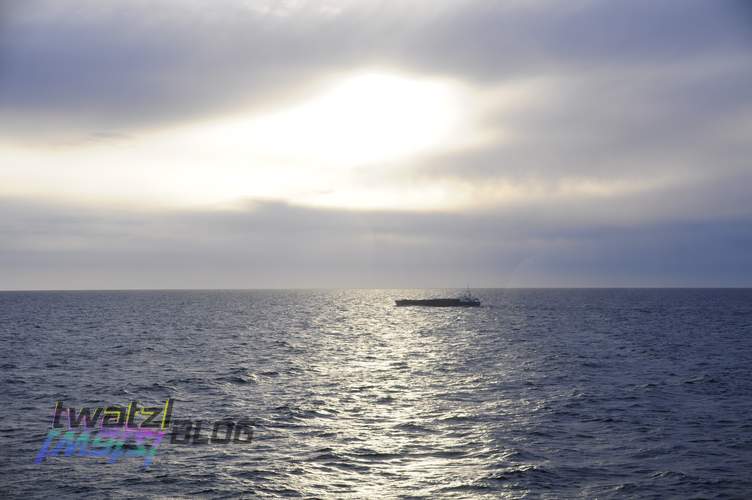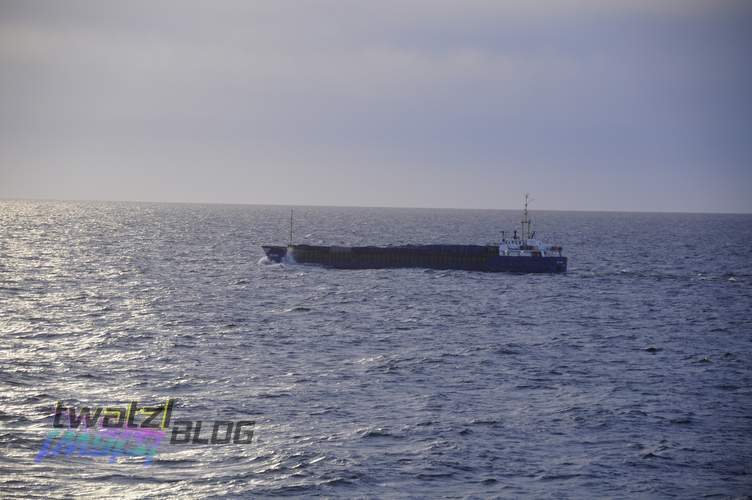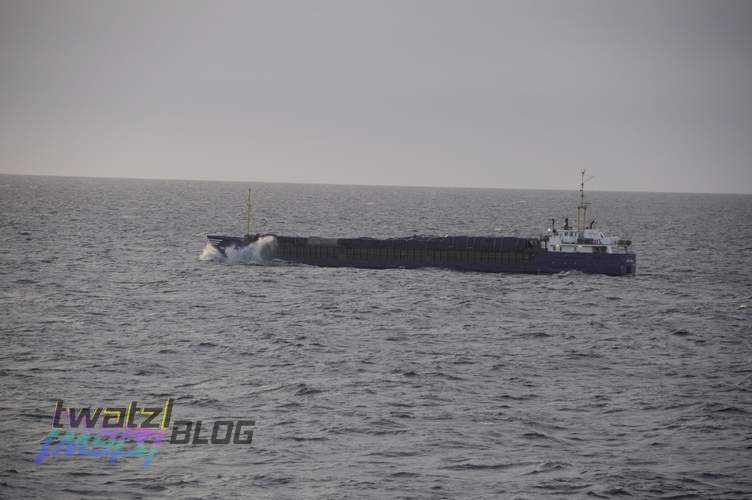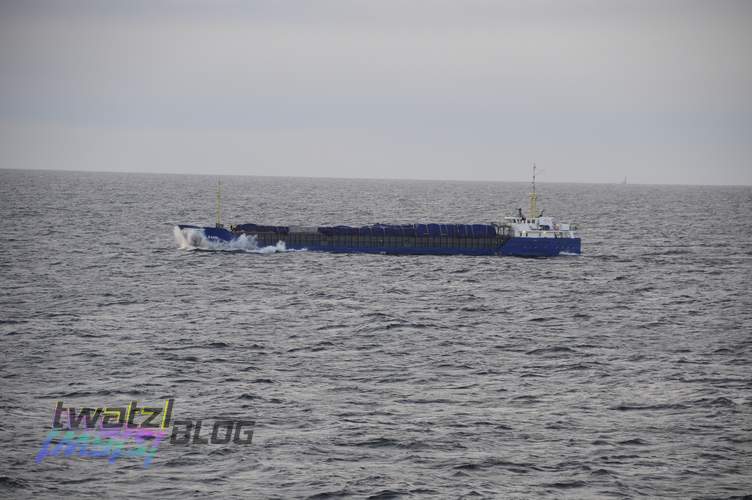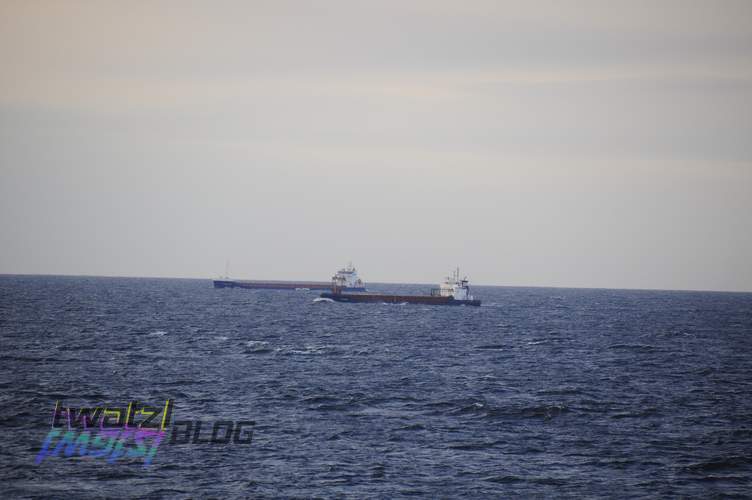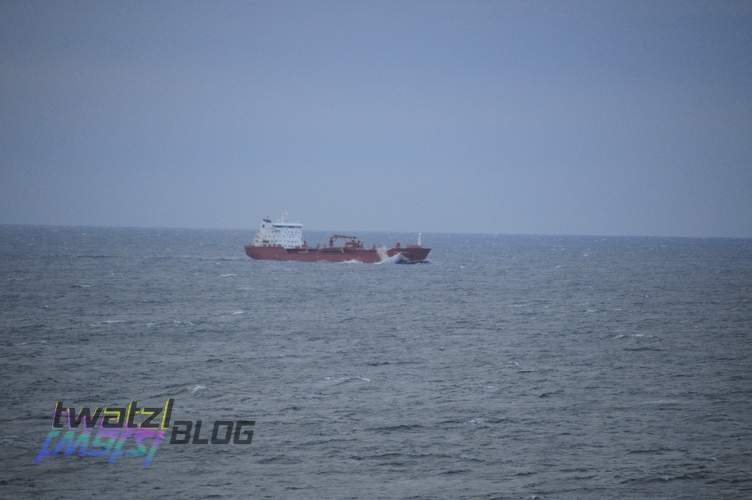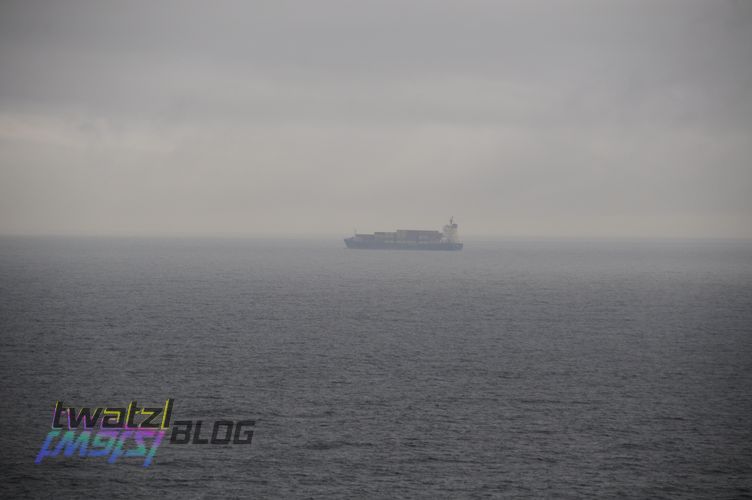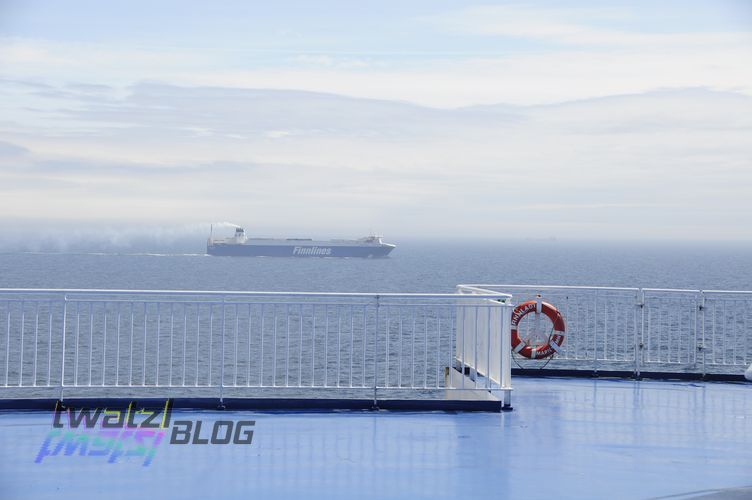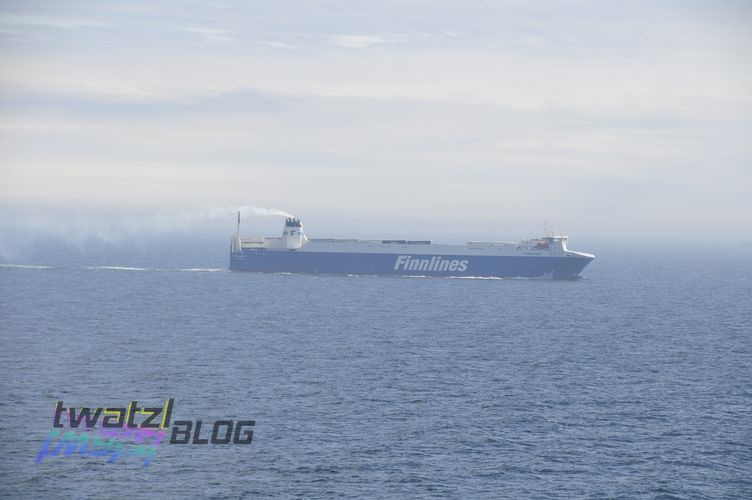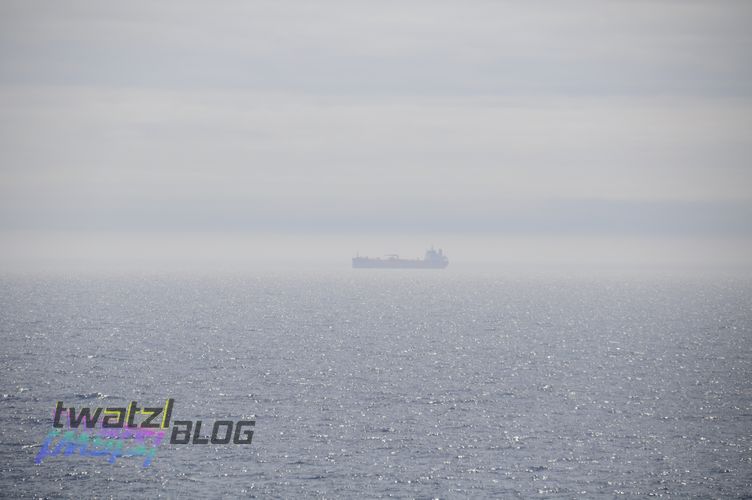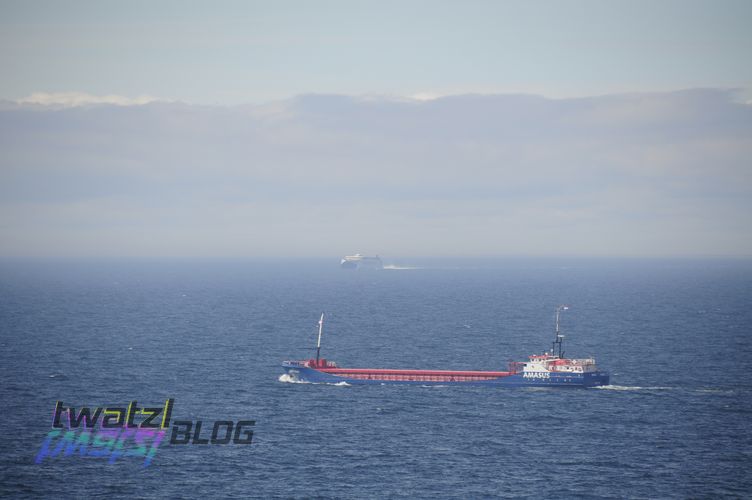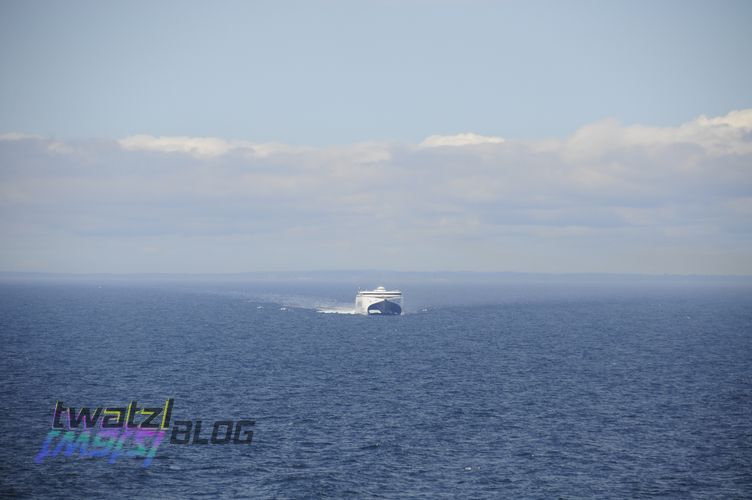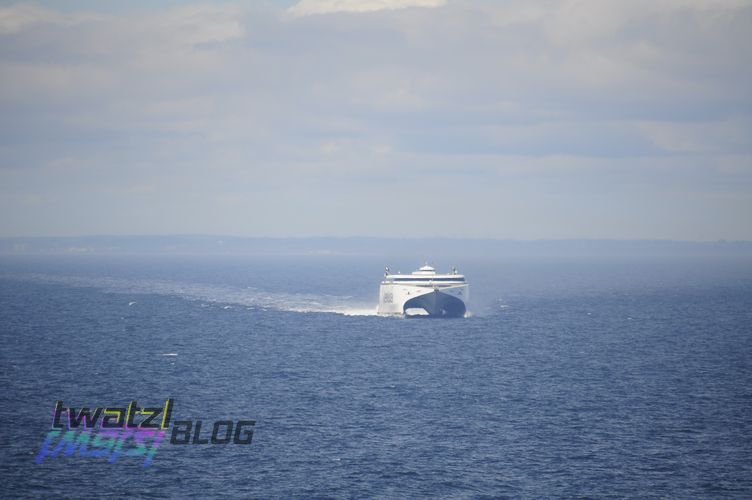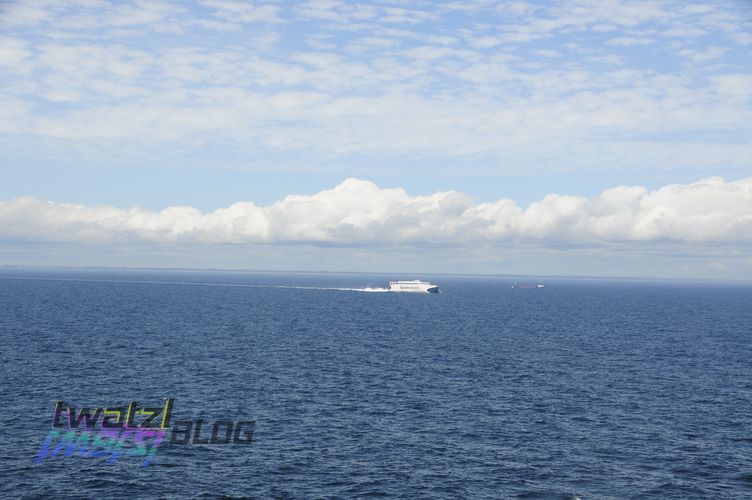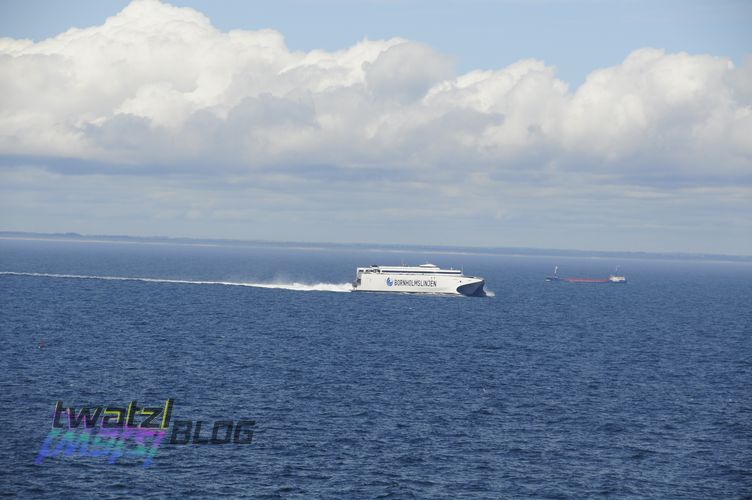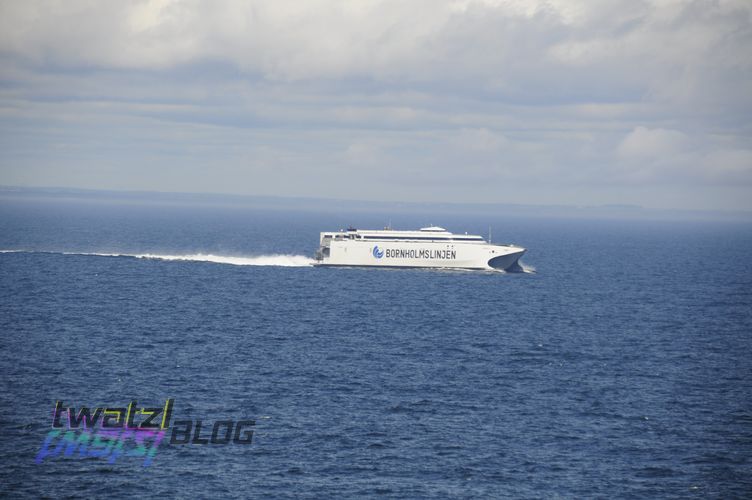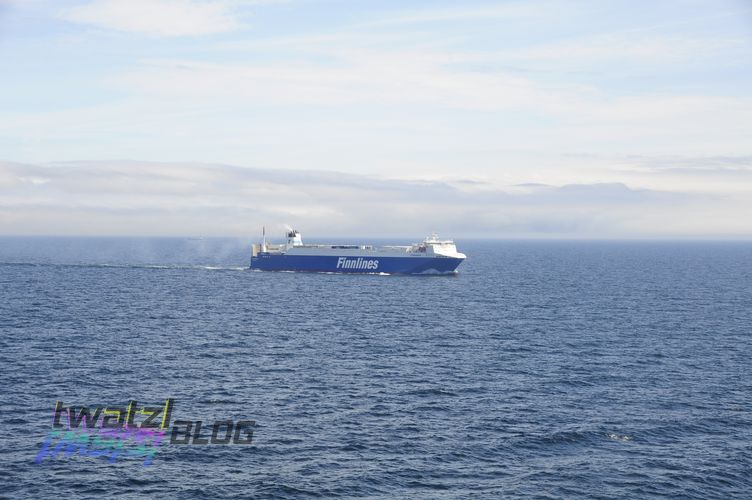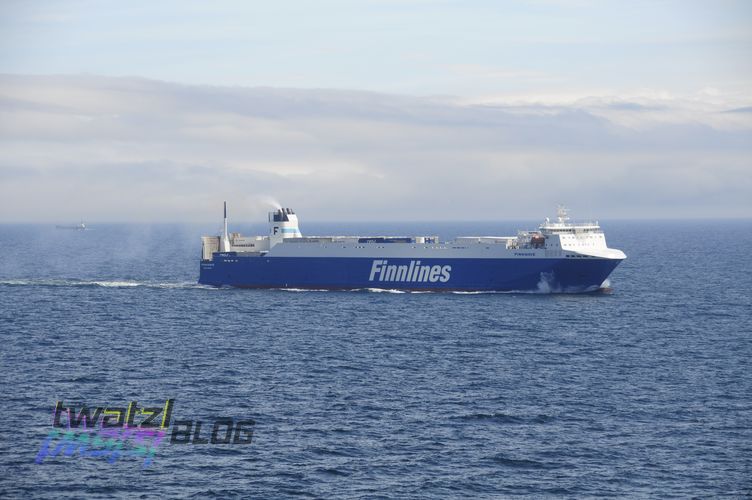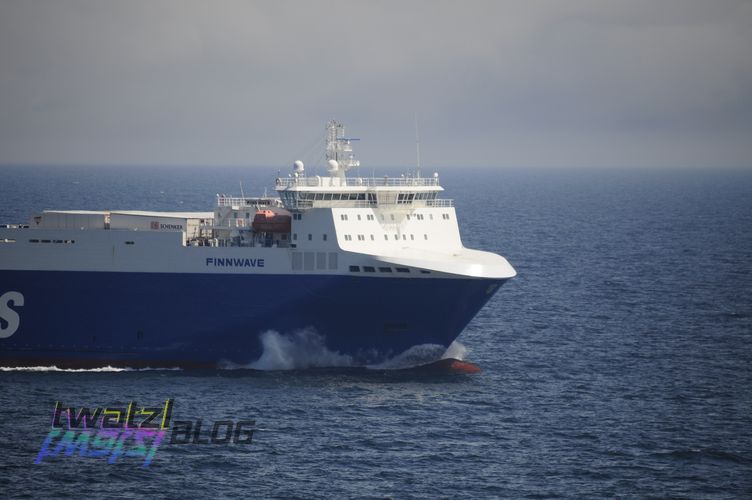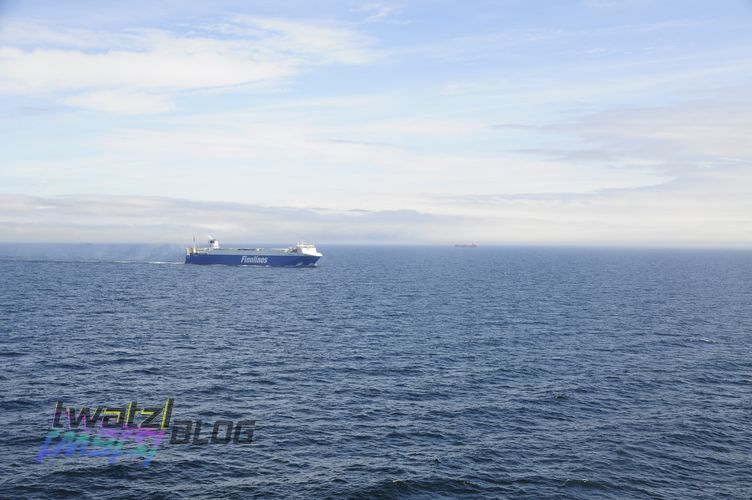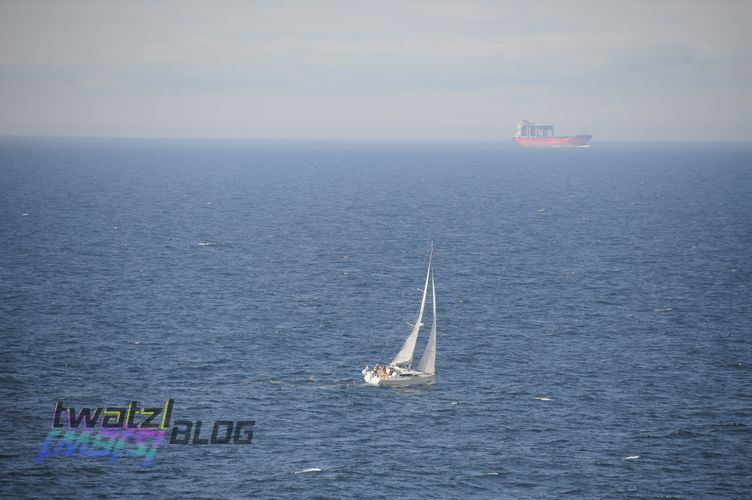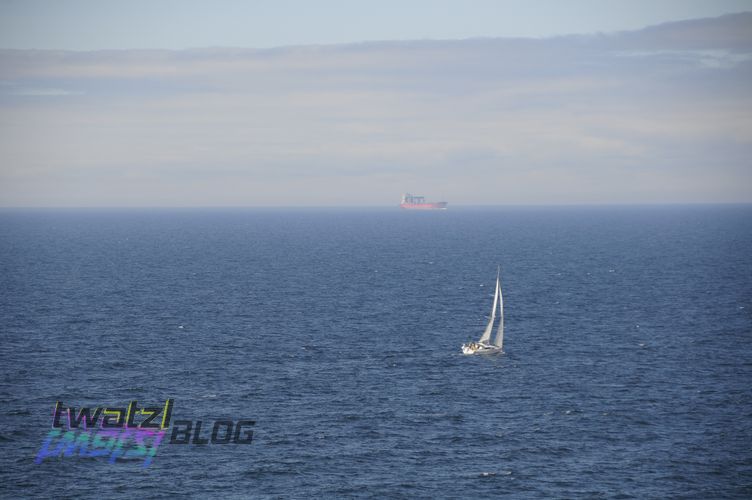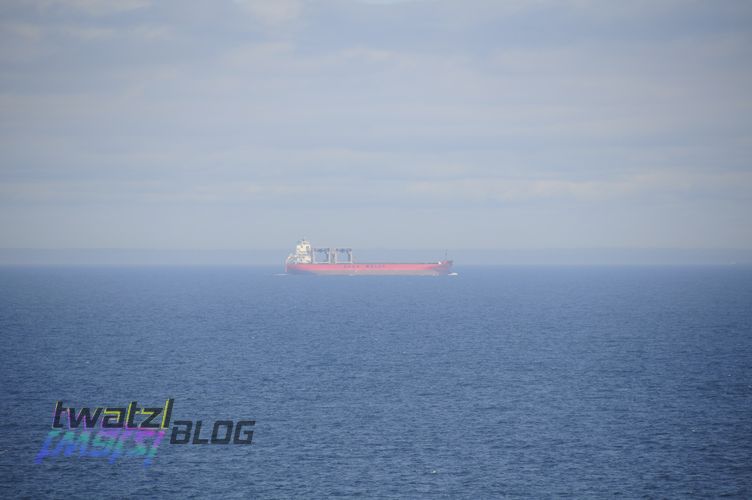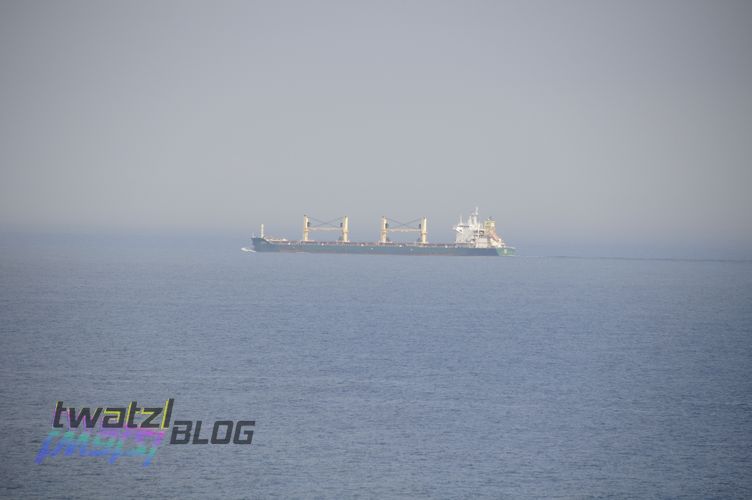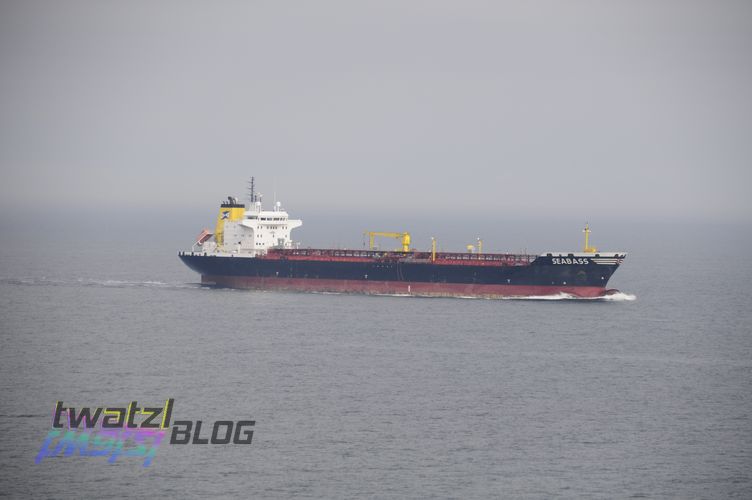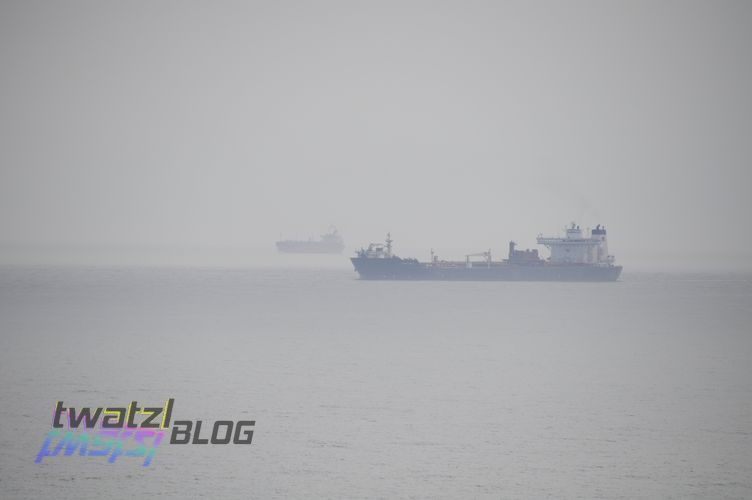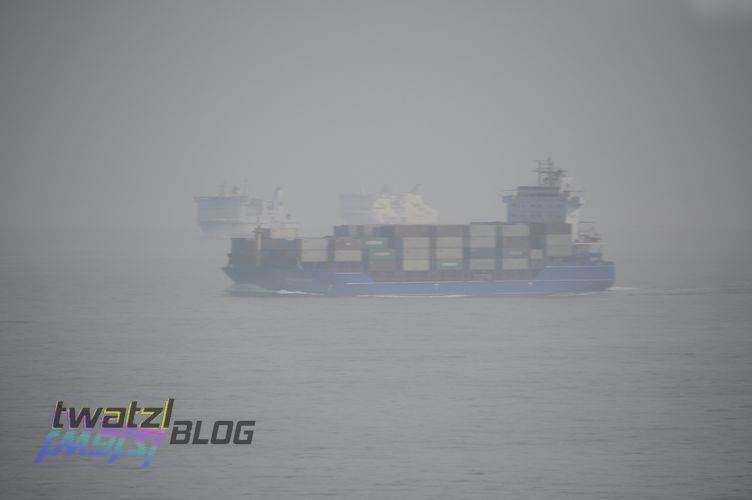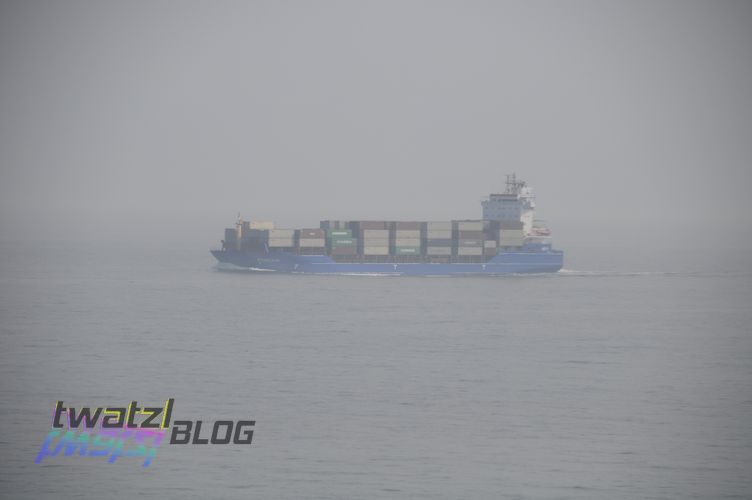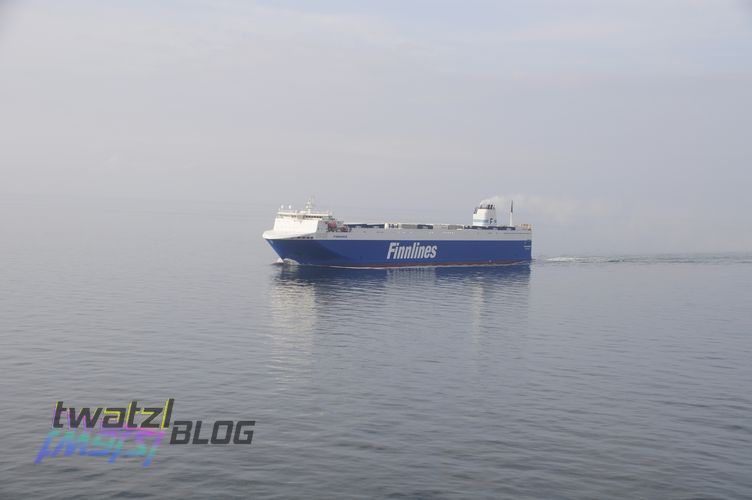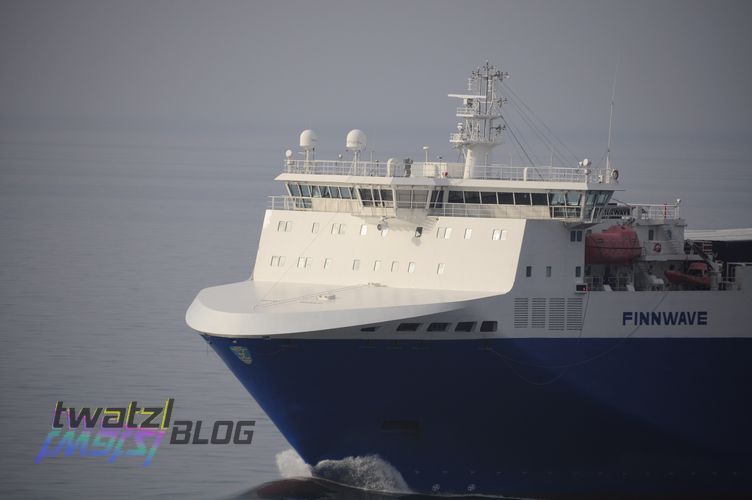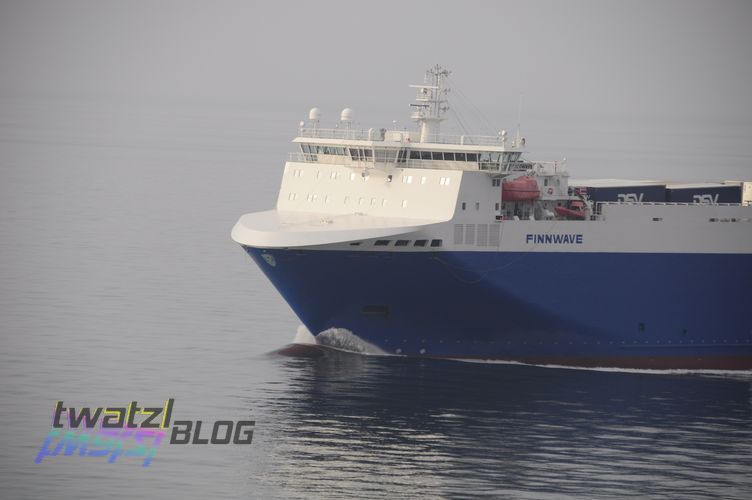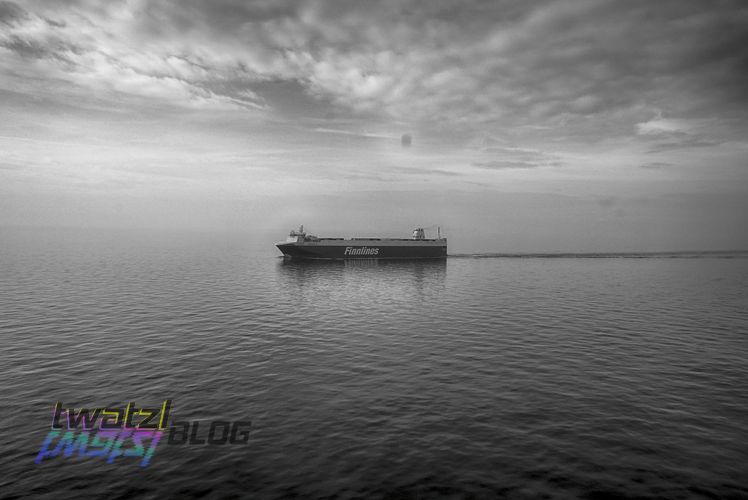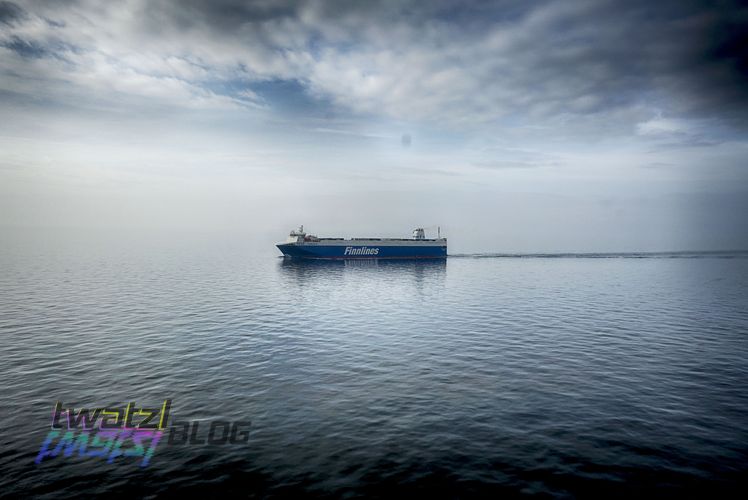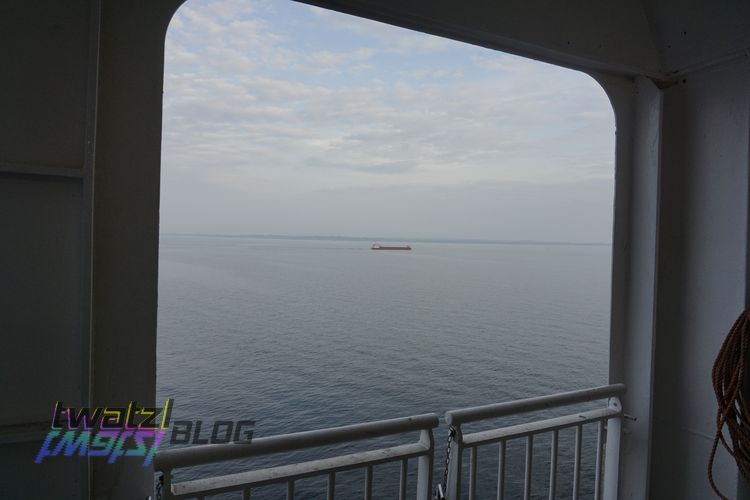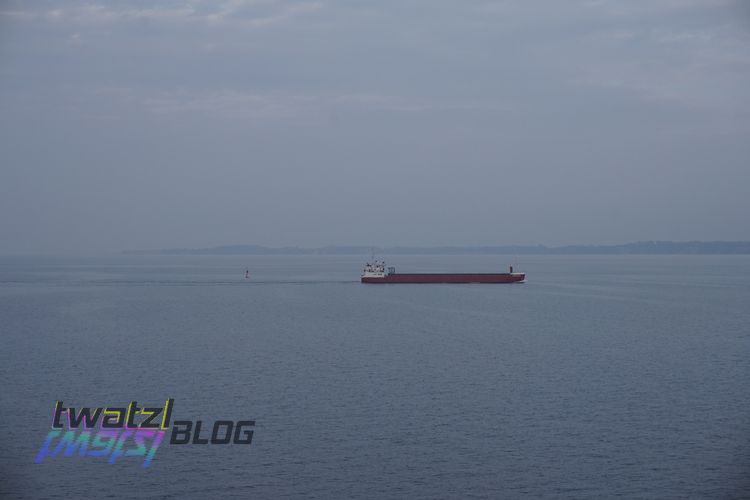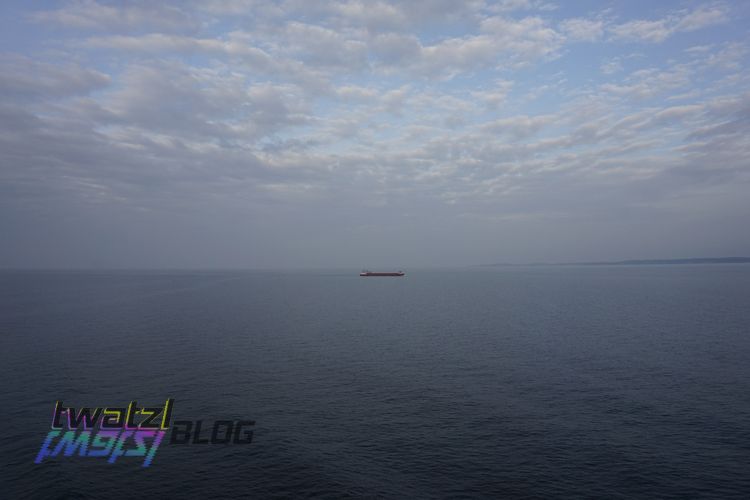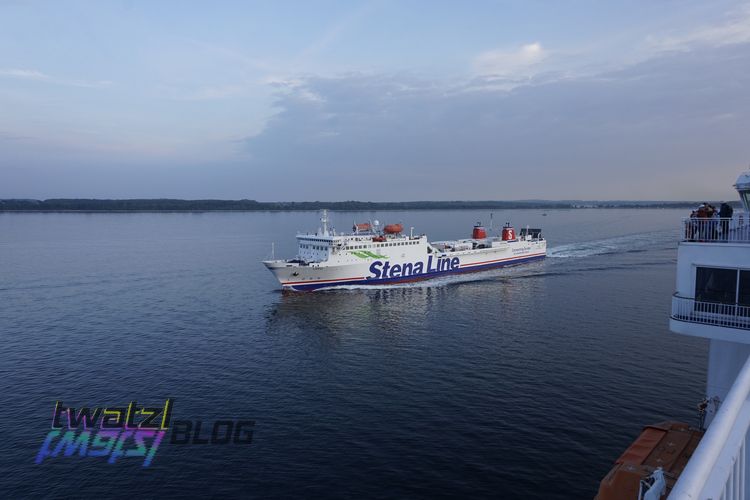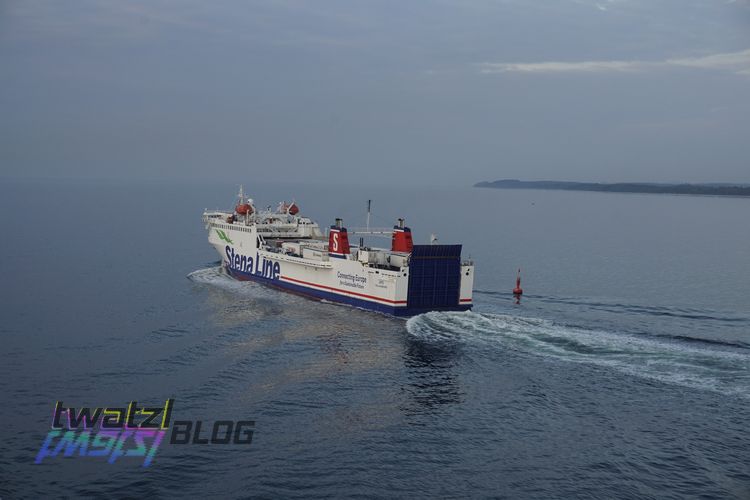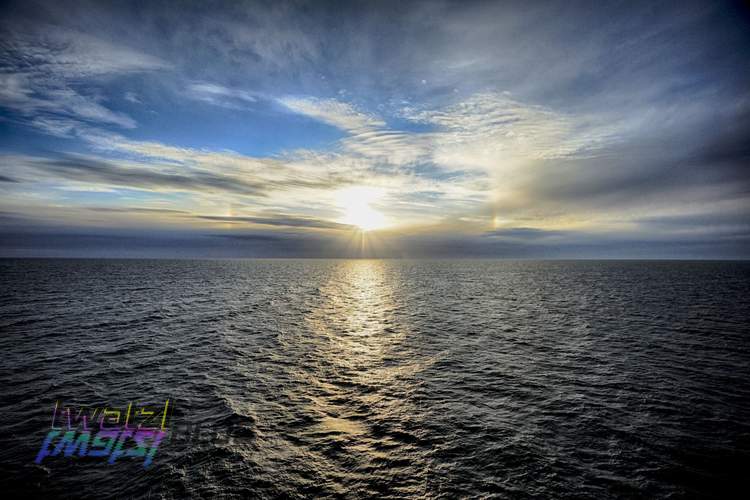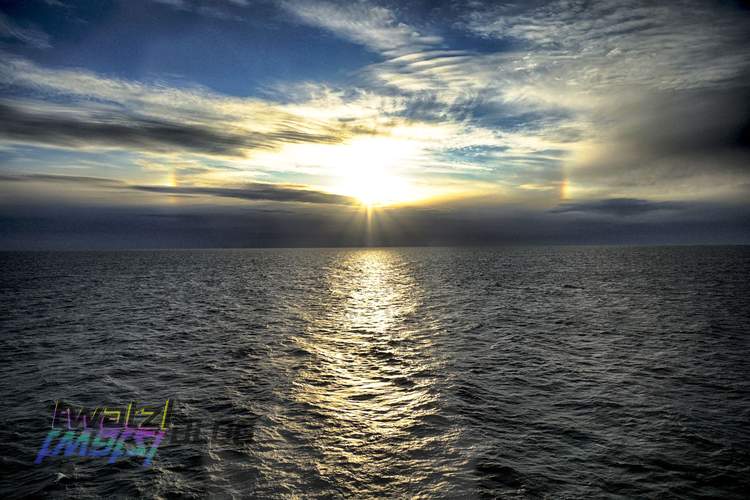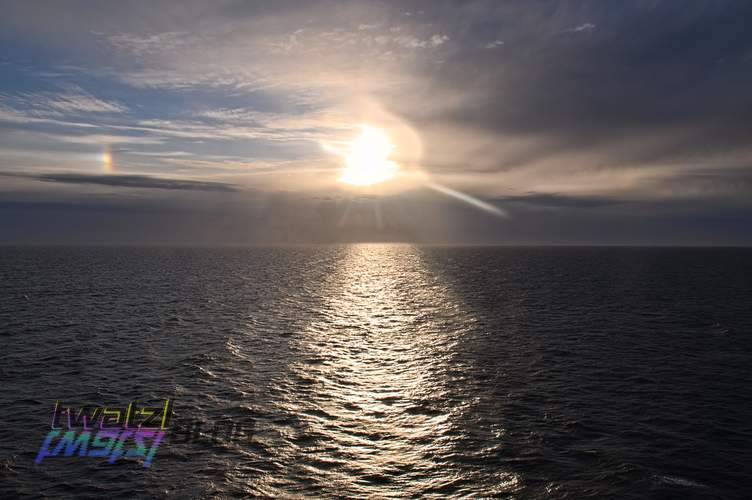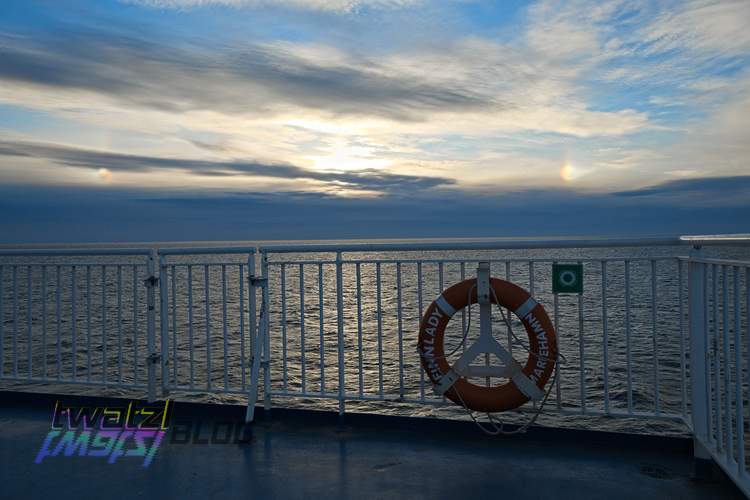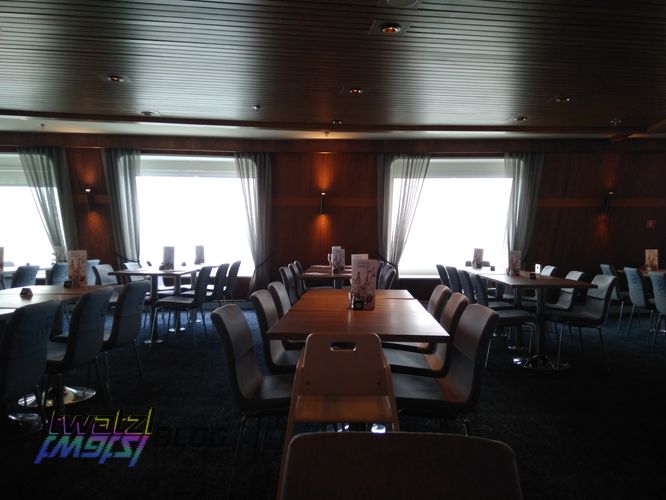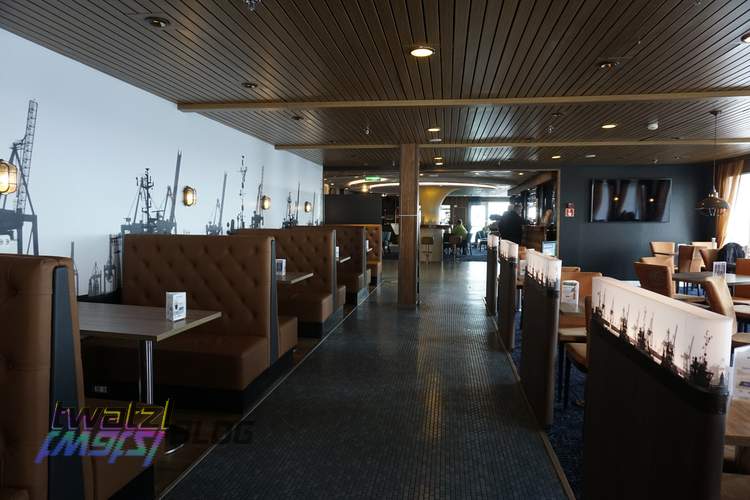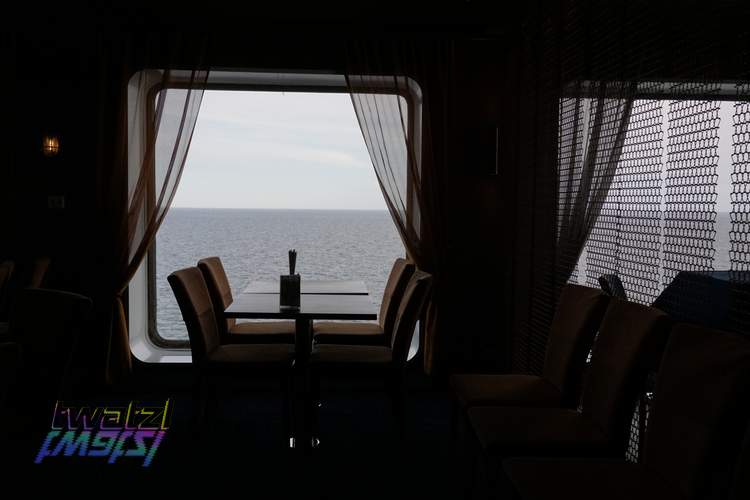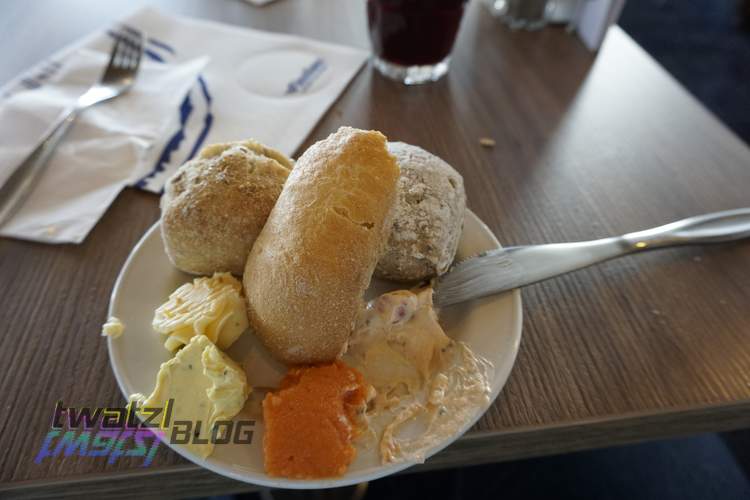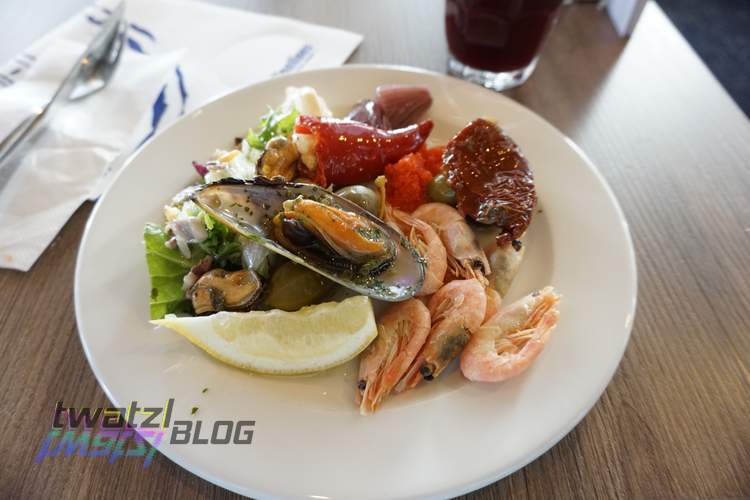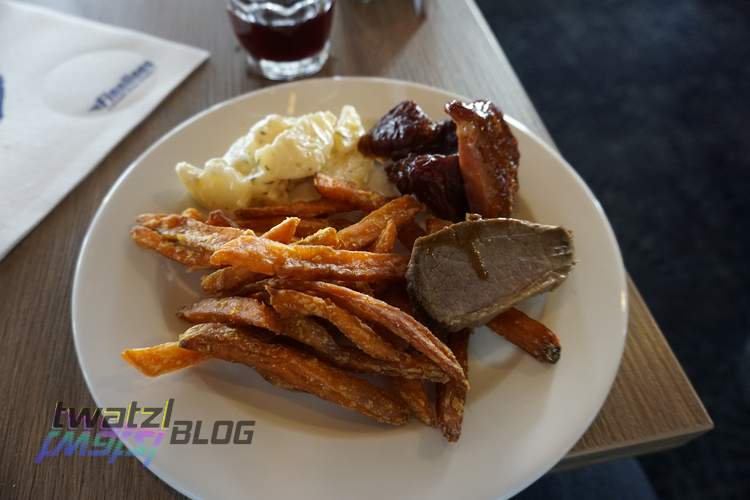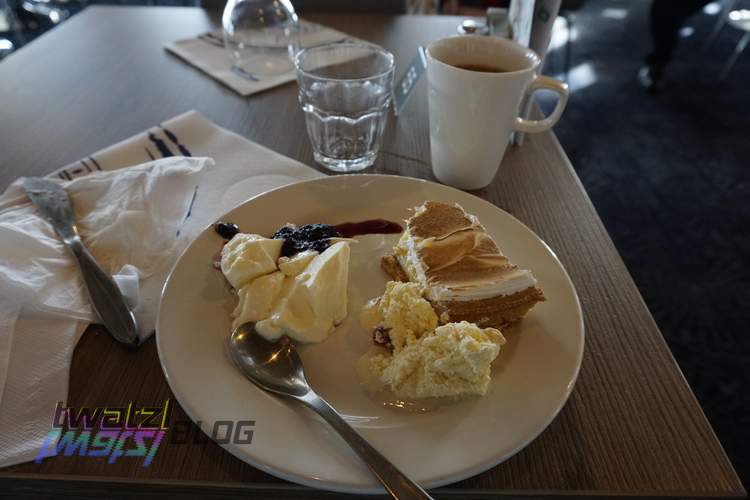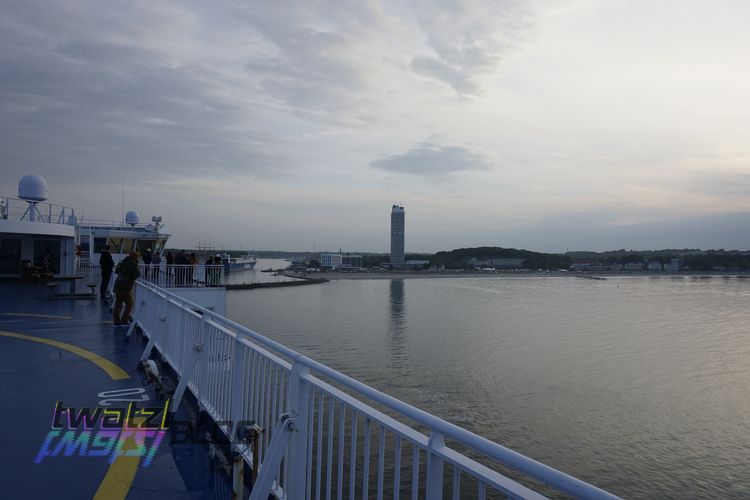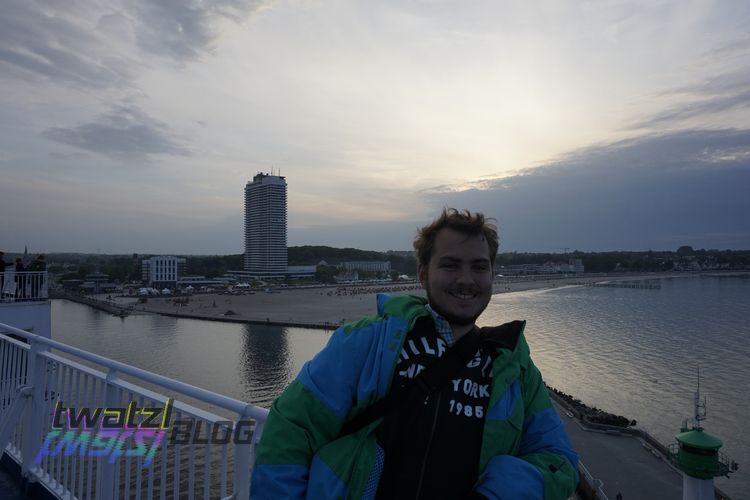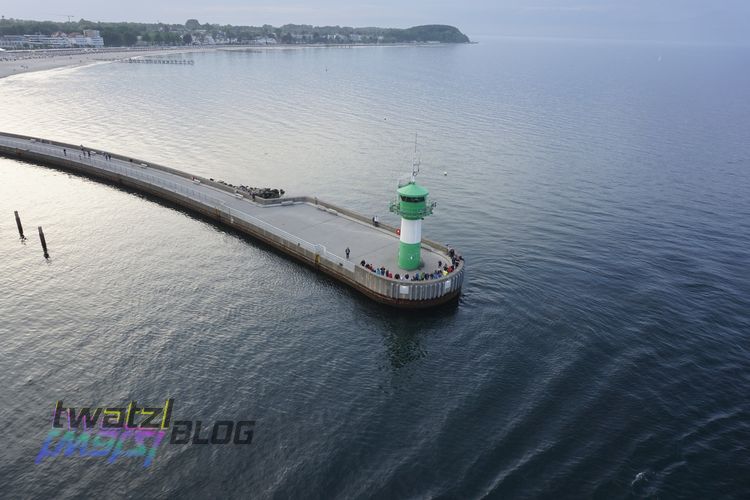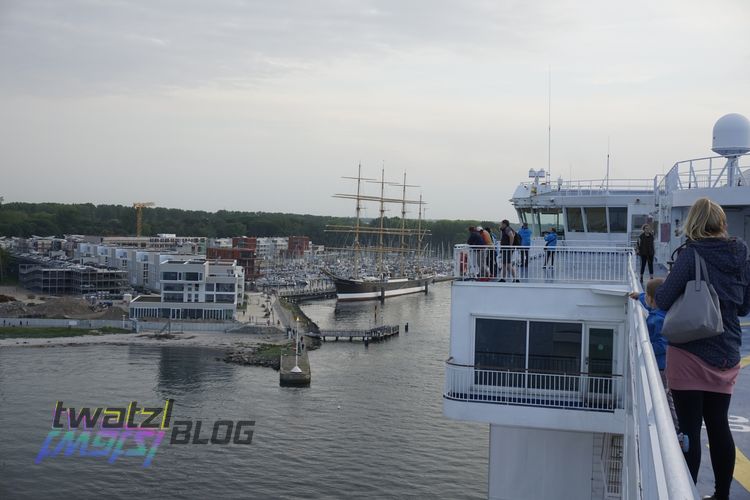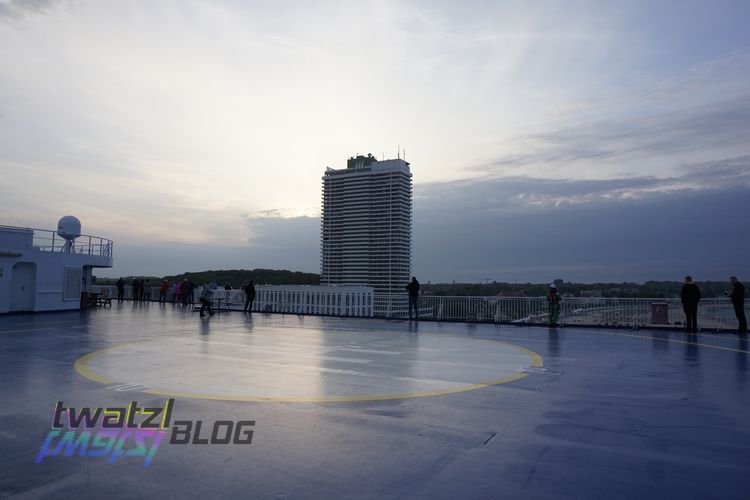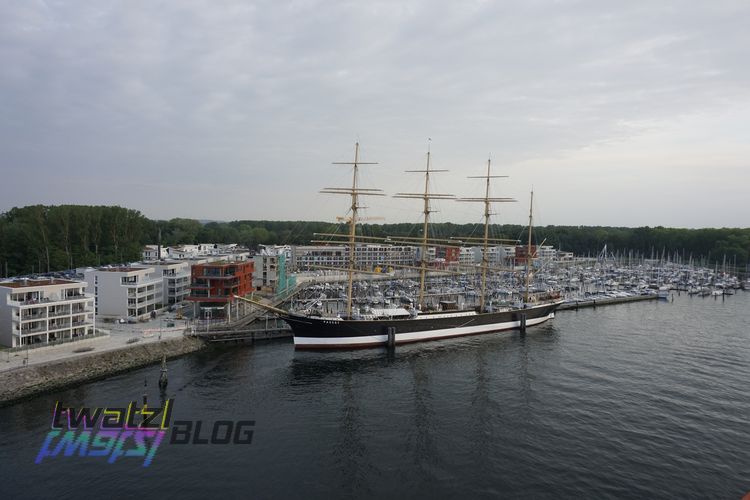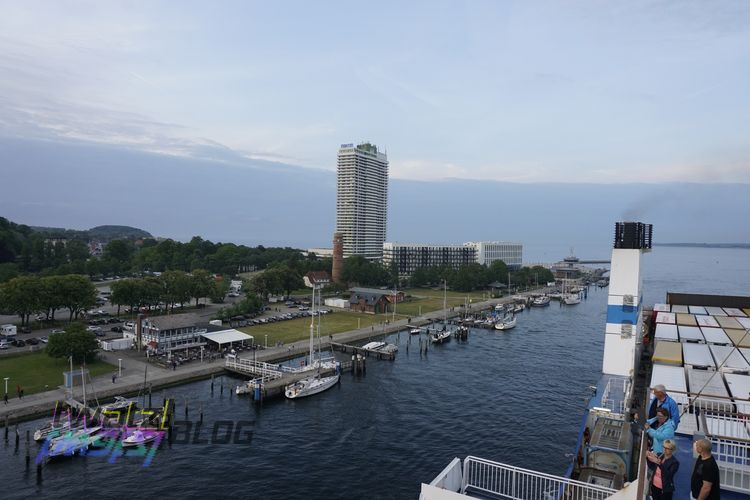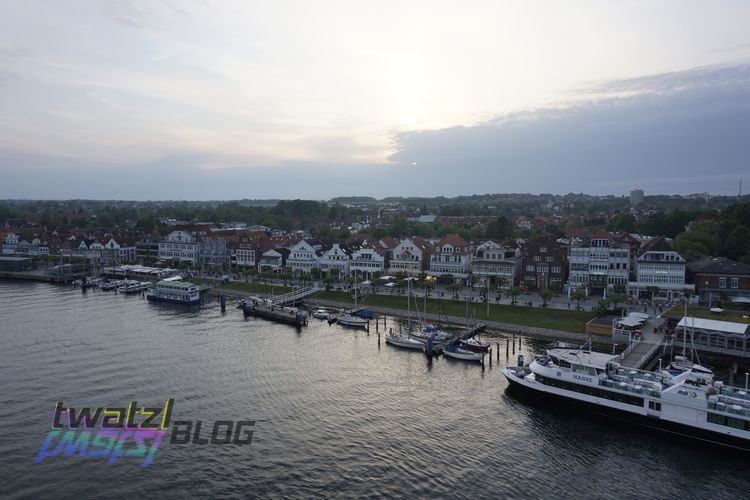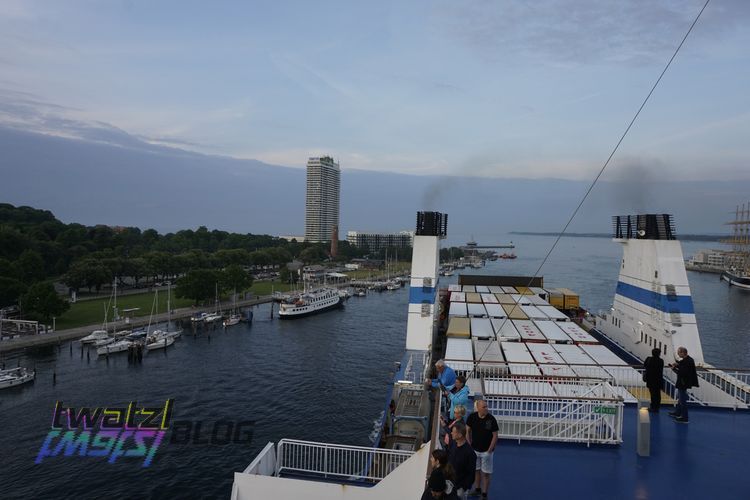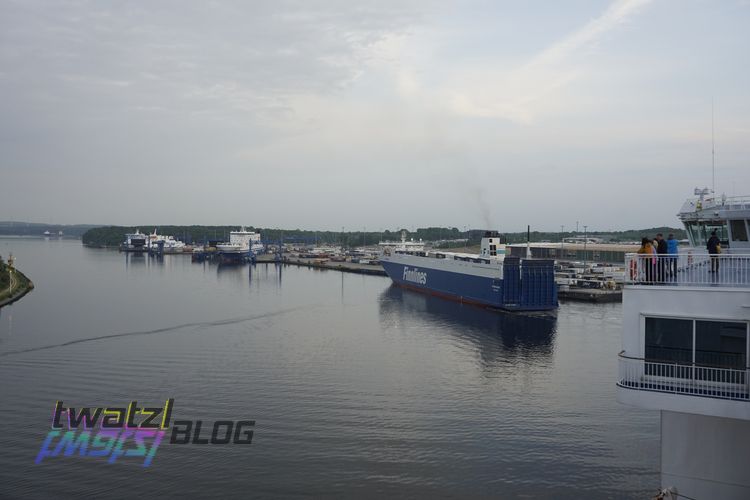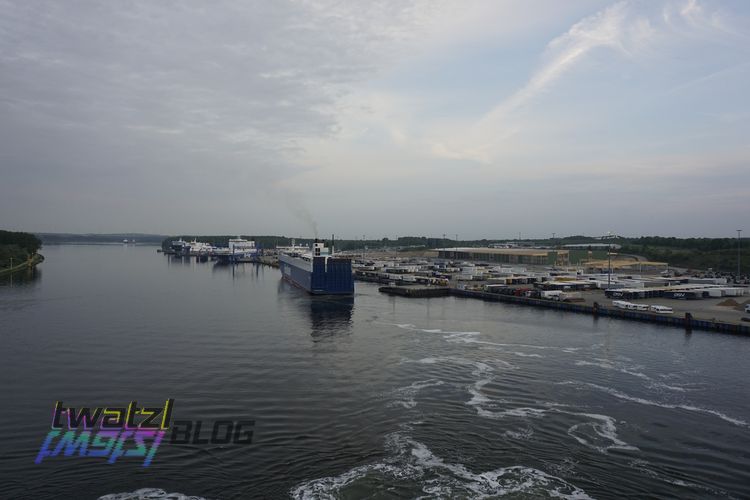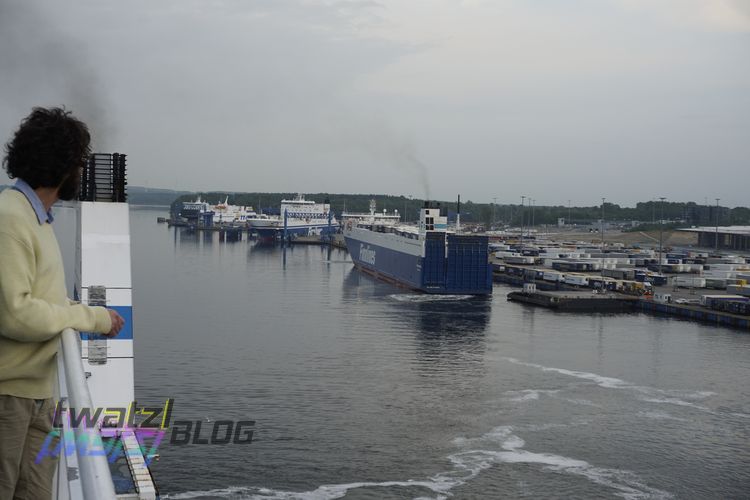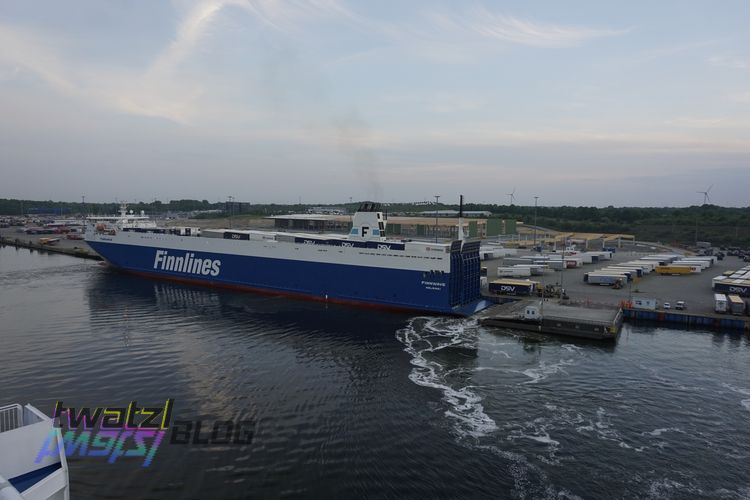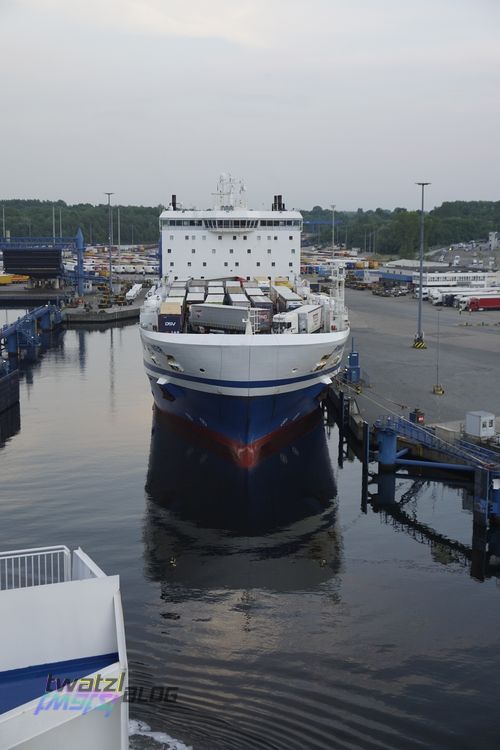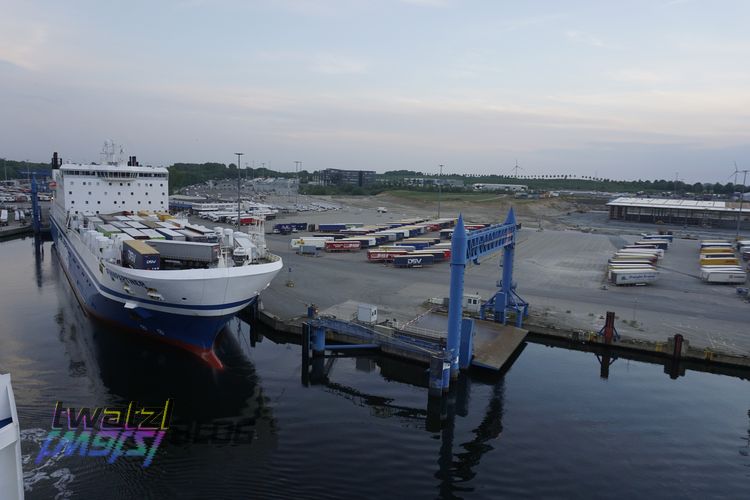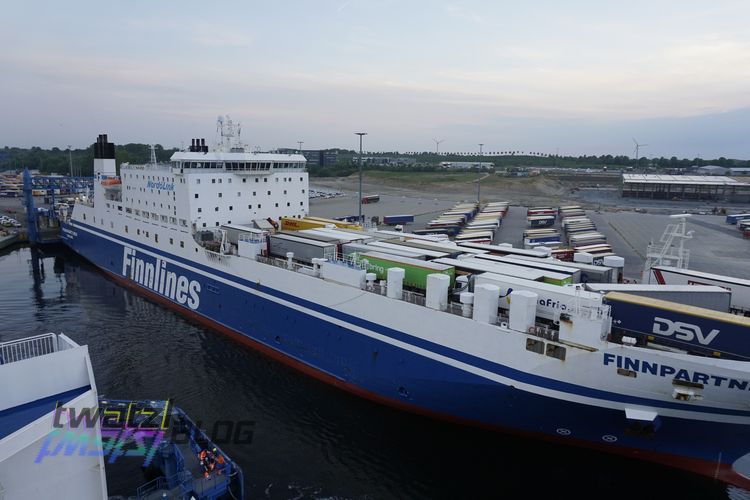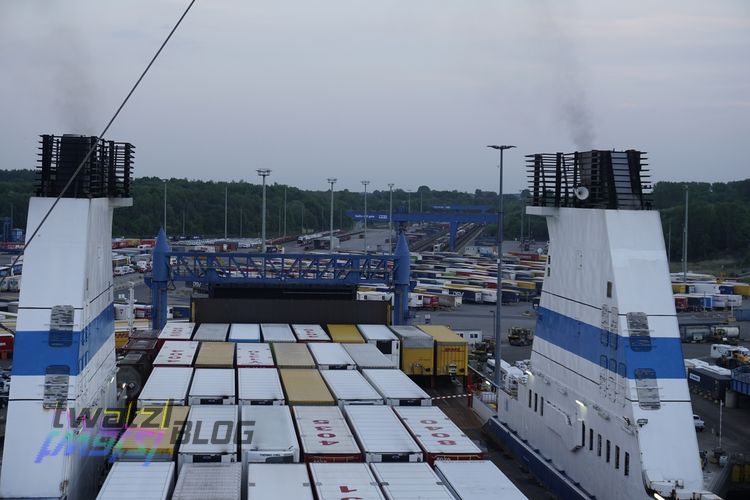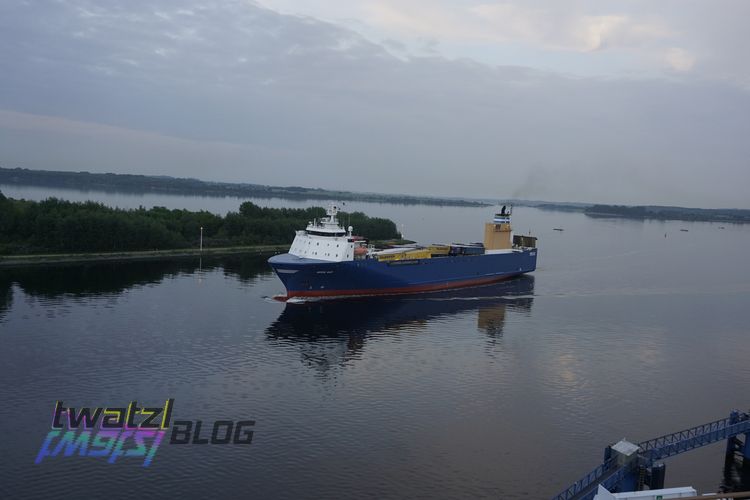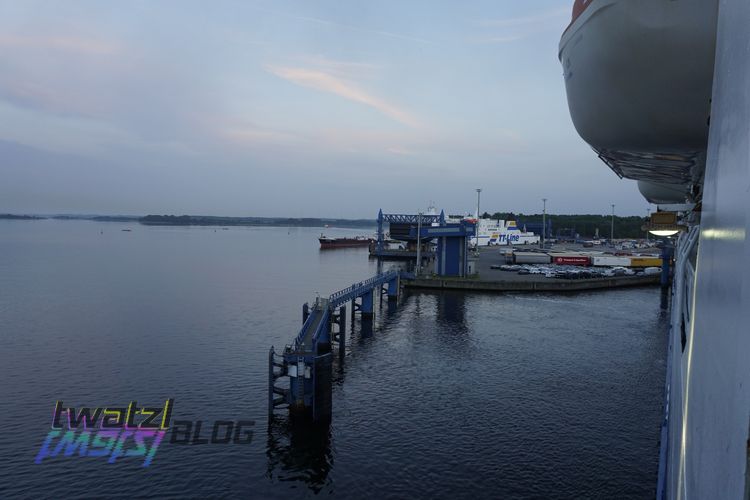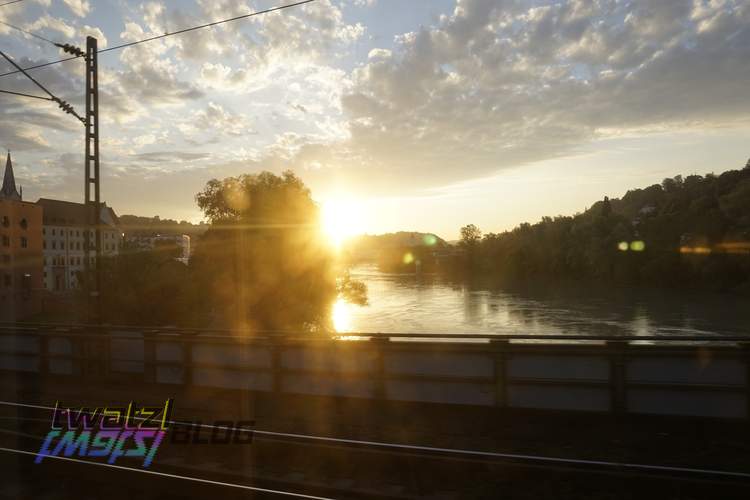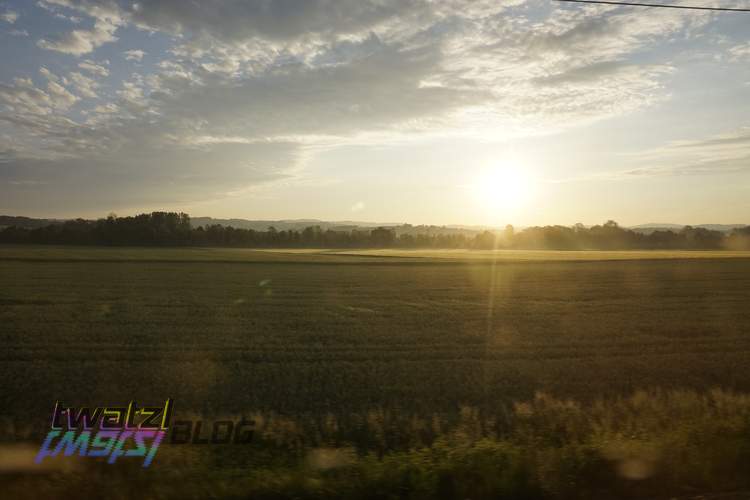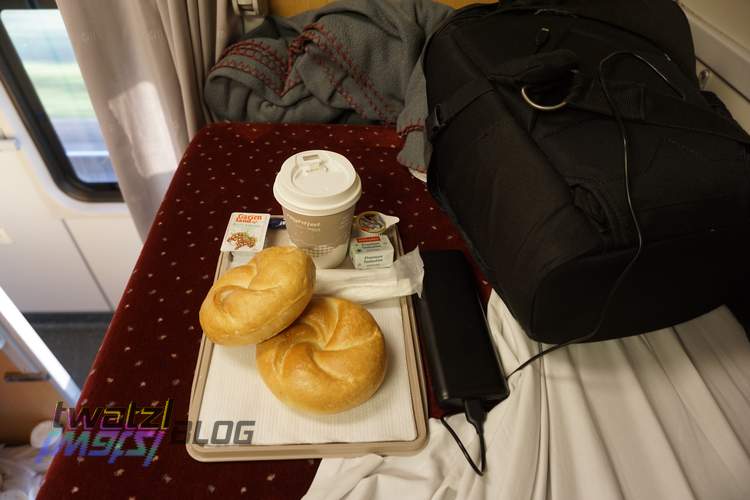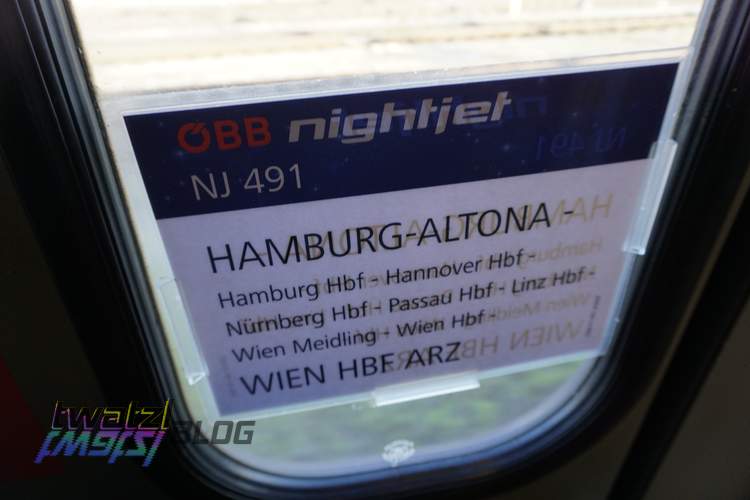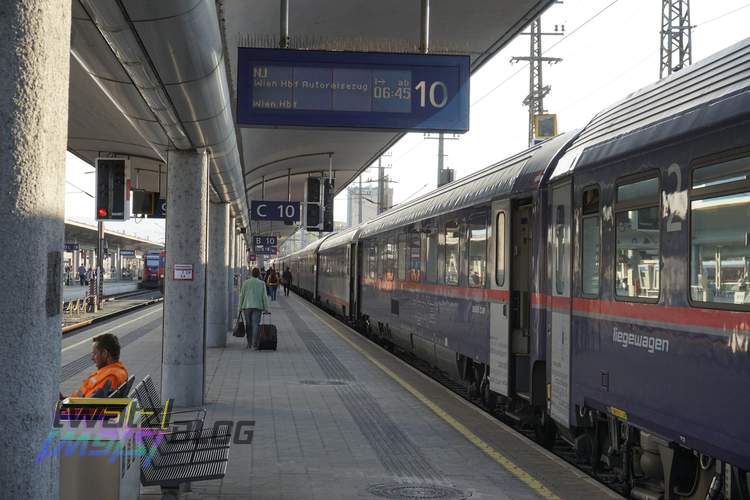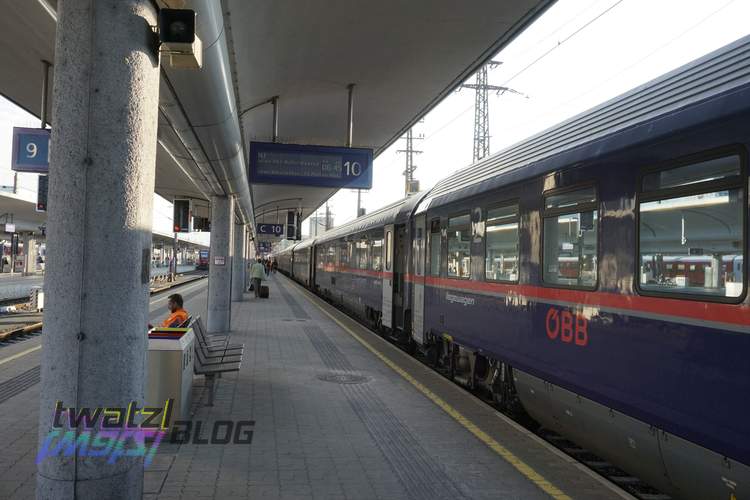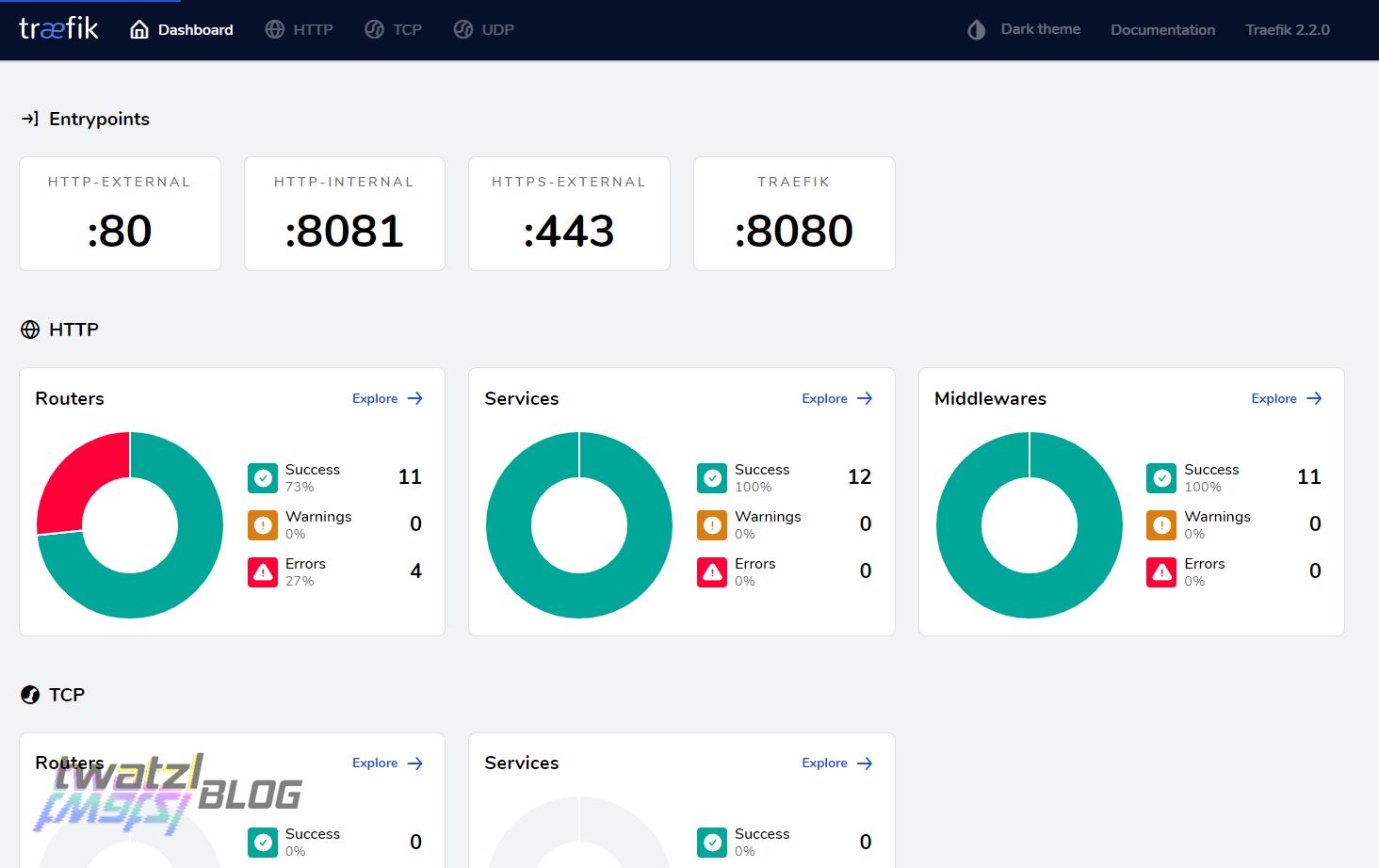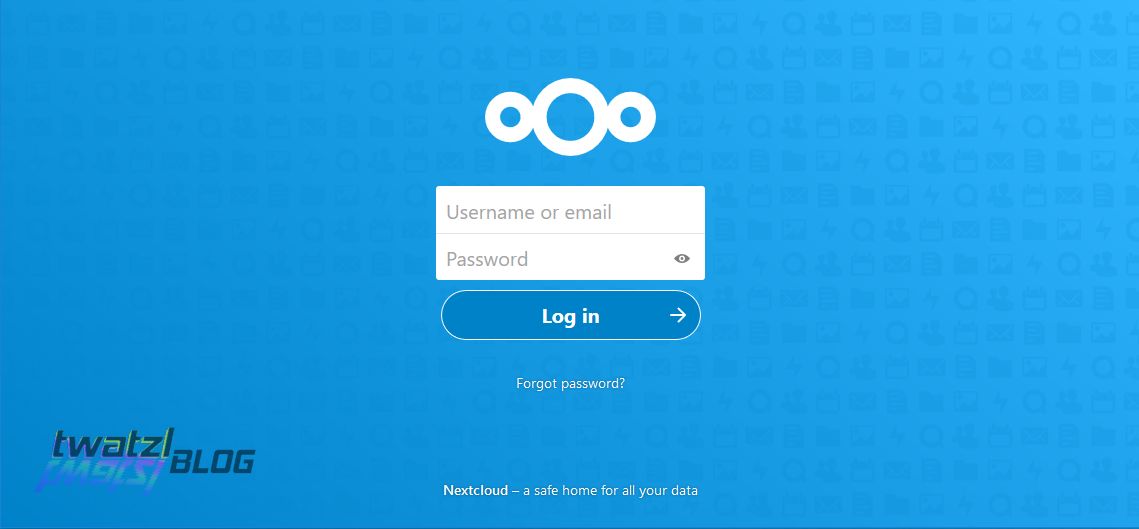Going Home
After 5 months in Finland it was finally time to say goodbye and so I started the last journey towards south.
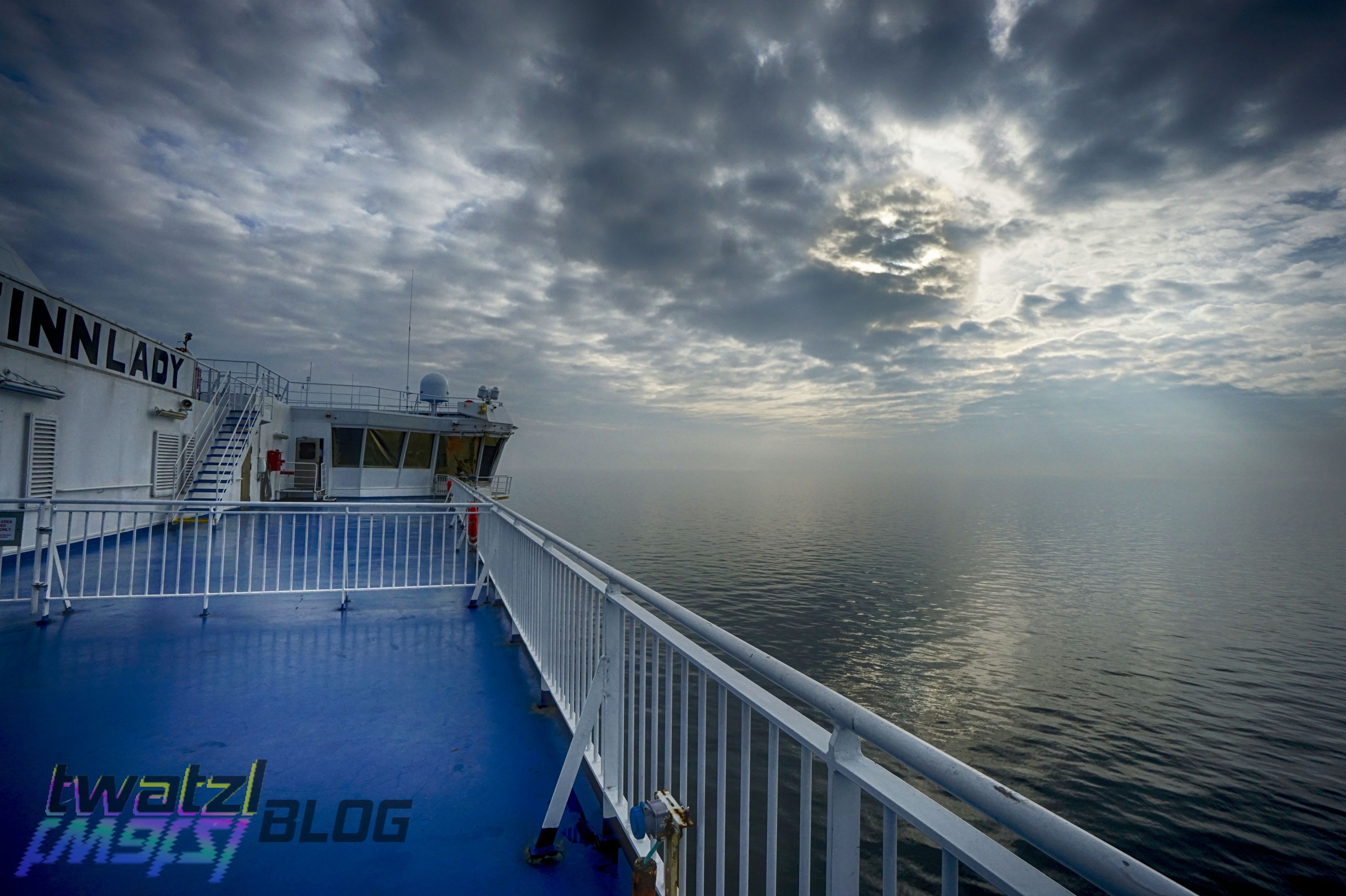
After 5 amazing months in Finland it is finally time to go home, but how? As I already mentioned Finland is very remotely from the point of view of central Europe. There are no train connections to the european mainland. So the only possibilities to travel to and from Finland are either plane or ship. I want to avoid flying if possible in order to save CO2, but do I really save CO2 when going by ship? After all shipping also has a very bad reputation and the journey by ship costs almost twice as much as a flight, because I have to book the ship to Germany and then also have to pay for the night train from Hamburg to Linz.
The Reasoning
Environment
A single flight from Austria to Finland causes about 160 kg of CO2 emissions per person [1] (other sources say over 800 kg[2]). Researching CO2 emissions is very hard. You can find 15 different answers to the same question. For the aviation industry it is relatively easy to find values, but for the shipping industry it is much harder. One of the reasons for this is that planes are of the shelf products. There are different planes, but each series of planes is built hundreds if not thousands of times. However for ships this is not true. Almost every ship is built individually. At most there are a handful of sister ships built to the same specifications. But even then it is hard to find data for them. Shipping companies are not very transparent when it comes to the disclosure of emission information.
For example on the Finnlines website [3] you find the following information:
During the last few years, Finnlines has made many investments
in ships’ energy efficiency. During 2018, six ro-ro vessels were lengthened
and the 30 per cent capacity increase will cut the energy consumption
per transported unit compared to the original vessel. Other efforts
to reduce energy consumption include change of propeller blades, running
on optimal speed, load, trim and timetable planning.
Anti-fouling is normally not used as Finnlines’ ships operate
in ice conditions, but on three ro-pax ships, which solely operate
in ice-free conditions in the Southern Baltic, the silicone anti-fouling
has been applied.
Consequently, Finnlines ships’ total fuel consumption has decreased
by nearly 30 per cent since 2008. In 2018, Finnlines’ vessel traffic
consumed 335,287 tons of heavy fuel oil and diesel oil.
This represents a decrease of 1 per cent when allocated
on each transported cargo ton compared to 2017.
Which basically says they are doing something, but not how much emissions it actually causes to take the ferry. And it makes the problem with emission calculations even more obvious. The emissions of a ferry depend on so many factors, the fuel used, aftermarket modifications and even the paint used for the ships. This makes it very hard to find values for a specific ship.
Oftentimes on the internet you find values for cruise ships, but this is not a good comparison value. Cruise ships are only meant for the pleasure of it’s passengers, but the ship I am going on is a ferry. It is built to not only carry passengers, but also cargo, trucks and cars and it has less commodities than a cruise ship. Thus it is more efficient.
Update December 2019: Finnlines has published information on the emissions of their ships [4]. According to the article the line from Helsinki to Travemünde emits about 80 kg of CO2 per person. According to the Austrian Railways (OEBB) a person travelling by train emits about 14 g of CO2 per kilometer[5]. For the approximately 930 km from Hamburg to Linz this would result in a total emission of about 14 kg of CO2. In total this means that with 94 kg the journey by ship and train saves about a third of the CO2 compared to a flight.
Pricing
Regardless of the fuel efficiency and environmental aspects there are two other aspects remaining. Pricing and experience. When compared to the plane the ferry is super expensive. The plane costs about 150€ depending on when you buy the ticket. The ticket for a 3 person berth costs about 130 euros, the night train from Hamburg costs another 130 euros. It is a two and a half day journey so you also need to include food for the time. So going by ship is actually more than two times as expensive as a flight and takes two and a half days instead of one day.
However this takes not into account that I also had a lot of stuff which I needed to take home and this would likely have been a problem when going by plane, so this was another advantage for the ferry.
Experience
Undeniably the ferry offers the better travel experience. With the plane you get on, fly up high, land and then you have seen nothing. With the ship you are at sea for a whole day. You see the harbour when leaving. And since the ferry only went to Travemünde I have the unique opportunity to visit the city of Lübeck, which I would probably not have done otherwise. So in addition to the ferry trip I also booked an AirBnB in Lübeck and stayed there for 3 days.
Also I will never forget the food on the ship and I have met other people also travelling and also other students. These are some experiences you will never have when flying. So this is another reason for taking the ship.
The Journey
After booking everything I planned how to get to the ship. Contrary to the other ferries Finnlines does not depart in the center of Helsinki, but in the industrial harbour in Vuosaari. So I had to take the bus, the subway and the bus again to get there.
It was a bit of a stress, because I realized last minute that I had to be there 2 hours before departure, when for the ferry to Tallinn I had only to be there 1 hour prior. So I quickly packed my things. Another problem was that May 30th was a public holiday in Finland. This was a problem because the dorm required me to cleanup, but on a public holiday the reception was closed and so you were also not able to borrow the vacuum. So yeah. Cleaning without tools is hard. Fortunately I managed to overcome all these issues and managed to be at the ferry office just in time.
We were picked up by a driver and brought directly to the deck of the ship after going through the whole harbour. When looking down from the ship it became obvious that the main purpose of this ferry was goods transport.
I took a couple more pictures as we were leaving Vuosaari.
And a panorama picture looking back at the city of Helsinki.
And in the distance I could get one last look on the vanishing city.
As already mentioned the journey takes one day. The departure is at 5pm and the arrival at 9pm in Travemünde. In the meanwhile you also cross the timezone border, which means you go one hour back in time. However on the ship it is finnish time at all times. This lead to quite a bit of confusion. Would I arrive at 9pm or 10pm? :D
High on the Seas
Our Ship - The ‘Finnlady’
The ship I was travelling on was the Finnlady. It was built in 2007 in Ancona, Italy and is a so called ro-ro ferry[6]. It is designed so that trucks and other vehicles can roll on and off the ship on their own.
The Finnlady is one of five Star-Class ferry ships built[7].
From the inside the ship is not nearly as glamorous as the ferries going to Tallinn. Still it is a very nice interiour although stuff like stores and casinos have been reduced on this ship compared to the others. Also there are many cabins in order to accomodate the passengers and truck drivers. There are fewer bars and at the entrance from the car deck there is a reception like in a hotel. To the aft there is a bar where you could sit outside, but most of the time it was too cold to do so and the view on the main deck was much nicer anyway. There are also two balconies to the side on the lower decks, right where the rescue boats are located.
Traffic on the Seas
There are many shipping lanes going through the baltic sea. Many of the commercial ships follow well defined paths, so natually you will see a lot of other ships when travelling.
The View
One of the coolest things on the sea is the view (well there isn’t much else anyway). In my opinion half of the recipe for great photos is to have luck with the weather.
I love doing panorama and hdr photography. Panoramas of the sea are especially challenging, because there is almost no feature points to align the images. Additionally the water changes from image to image. Waves are not static, but are moving all the time. Being on a moving ship that changes the photographers position doesn’t make this easier either.
The Food
I have to talk a bit about the food on the ship here, because it was really awesome. At first I was a bit hesitant to spend the 75 euros for the food package, but what other choice did I have? Bringing my own food would work, but I already had much stuff and did not want to bring food for 2 days and I knew from the ferry to Tallinn that the food on board was very expensive and the meal package was cheaper. So the meal package it was. And oh boy did it pay of.
There was an all you can eat buffet. It was not the quantity of the food that amazed me, but the quality. It was like dining in a very good restaurant. There was a huge variety to choose from. Starters, seafood, meat, desserts and much more, but the best thing was the view you had while eating.
The meal package allowed you for a dinner on day 1 as well as a brunch and dinner on day 2, but you could enter the brunch twice, so I split it up into breakfast and lunch (or 2nd breakfast). All in all I would say it pays off if you are a fan of good food.
The Arrival
After one and a half days we finally arrived in Travemünde. It was quite cool looking down from the deck to the people below. The ship is huge compared to the old town of Travemünde and the only thing higher than the ship was the only skyscraper in Travemünde.
The final leg
After a 3 day stay in Lübeck I travelled home by night train. It is operated by ÖBB and directly brought me home. But that story I will leave for another time.
Conclusion
As always I hope you enjoyed this blog post. This time it went a bit extreme with the pictures, but that’s the way it is with the travel posts.
References
[1] https://www.icao.int/environmental-protection/CarbonOffset/Pages/default.aspx
[2] https://www.atmosfair.de/de/kompensieren/flug
[3] https://www.finnlines.com/company/environment-and-safety/environment
[4] https://www.finnlines.com/newsroom/finnlines-calculated-passenger-specific-route-co2-emissions
[5] https://www.oebb.at/de/neuigkeiten/klimahelden.html
